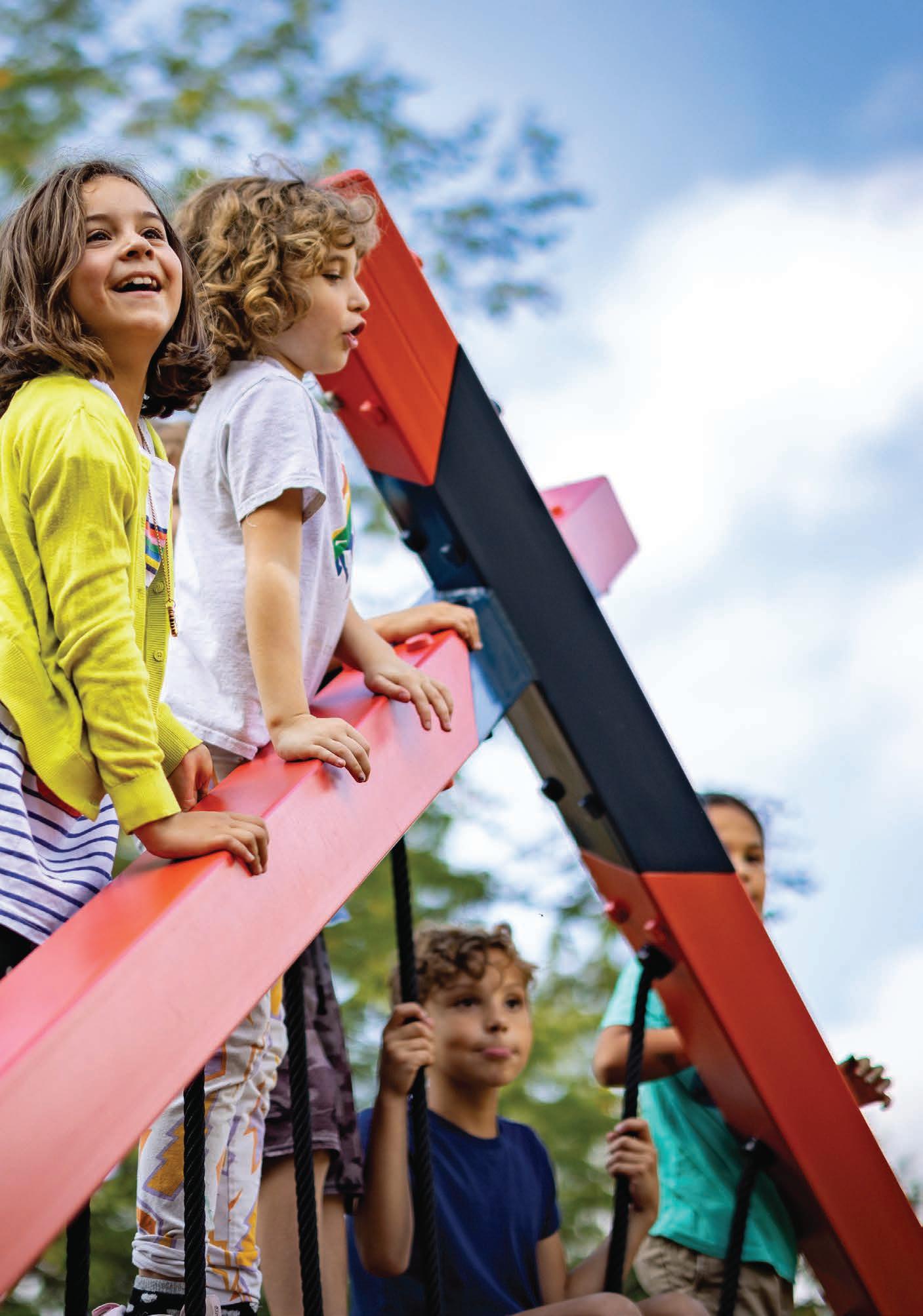
SCHOOL PL AYGROUNDS

Play shapes our childhoods. Teaches us social skills. Teaches us about ourselves. Tests us, empowers us, and shows us just how much we can achieve.
Play. It’s life-changing.
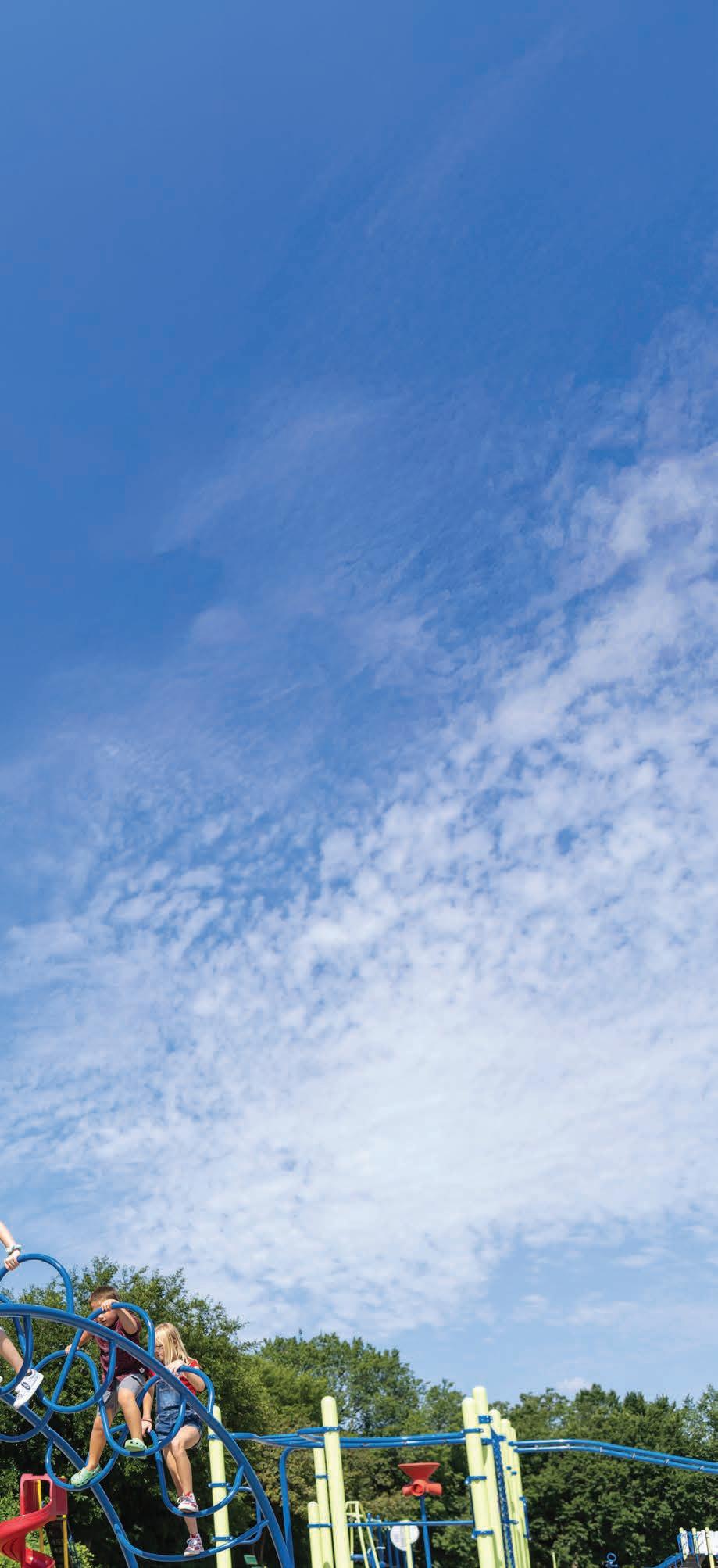



Play shapes our childhoods. Teaches us social skills. Teaches us about ourselves. Tests us, empowers us, and shows us just how much we can achieve.
Play. It’s life-changing.

Continuous, unscripted play promotes healthy whole-child development.
That may be why the American Academy of Pediatrics says recess is essential to children’s health and development. In fact, success in adult life has been linked to childhood play experiences that encouraged creativity, problem solving, teamwork, flexibility and innovation.1,2,3
Play deprivation, on the other hand, has been associated with a variety of serious consequences, including attention-deficit/hyperactivity disorder.4
Clearly, play is fundamental to children’s development. Here are just a few reasons why.
Physical Activity In this era of growing childhood obesity, the inclusion of daily physical activity couldn’t be more important. Play is good for both body and mind, increasing range of motion, agility, coordination, balance and flexibility while also decreasing stress, fatigue, injury and depression.5
Academic Performance Play and learning are inextricably linked.6 Physically active children consistently outperform their inactive peers academically on both a short- and long-term basis,7 and some experts argue play can be used to close achievement gaps between young children.8
Social and Emotional Play is inherently social. On the playground, children learn how to make friends, compromise, follow rules, regulate their emotions, and build their confidence, self-esteem and resilience.9
Inclusive Play Recent statistics show that 7,300,000 school-aged children have a disability.10 A universally designed play space that goes beyond minimum accessibility to meet a variety of needs and interests enables children of all abilities to develop physically, socially and emotionally.
Child Town, Shelbyville, Kentucky
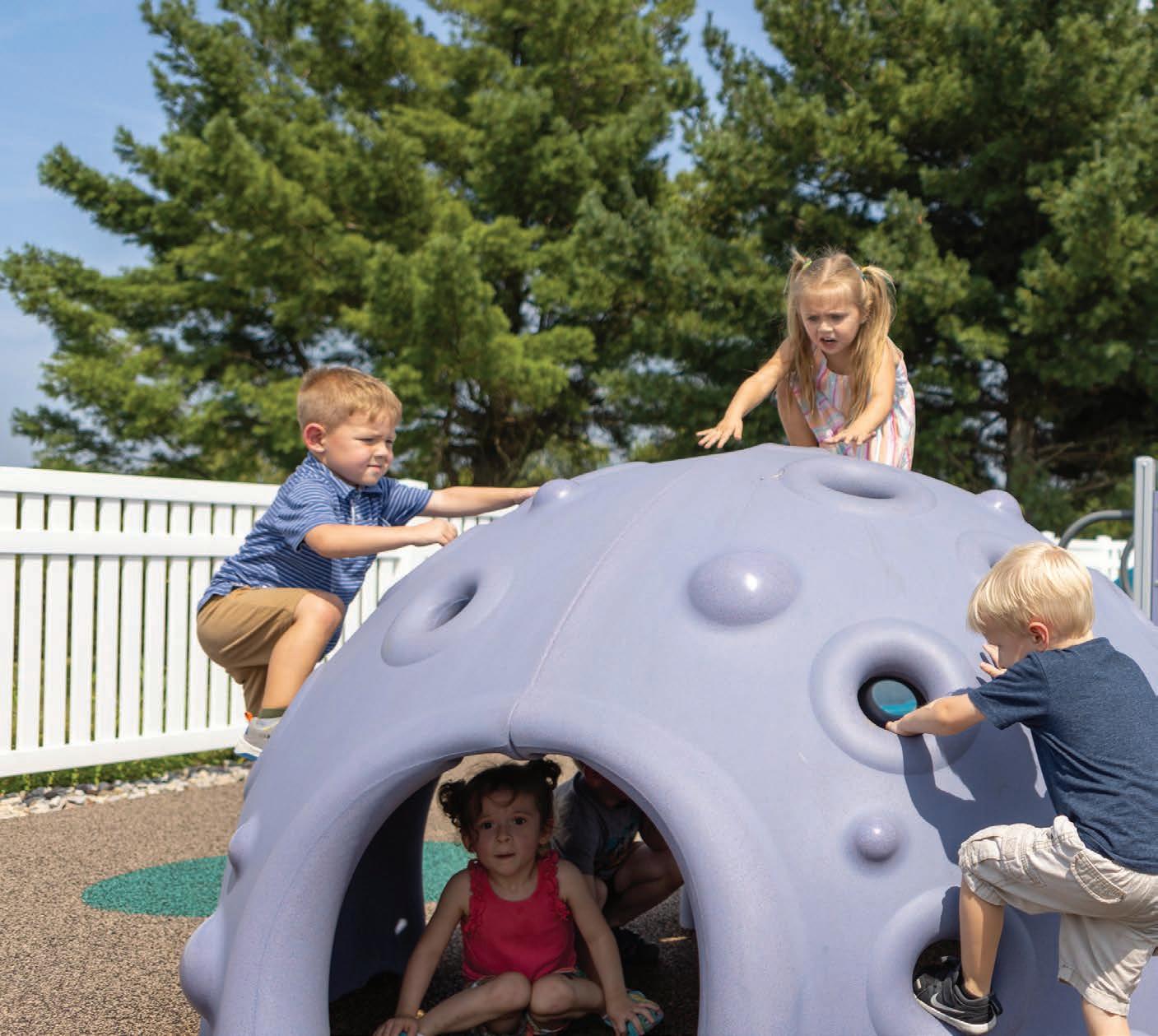
INFANTS AGES 6 TO 23 MONTHS
EARLY CHILDHOOD AGES 2 TO 3 YEARS
PRE-K AGES 4 TO 5 YEARS
A s any parent, teacher or caregiver can attest, so much development happens during these few short years, both physically and cognitively. If your school spans one or more age groups, make sure to consider equipment choices that will grow with kids and offer the next-step challenges they seek.
Here, one PlayShaper® playstructure emphasizes easy climbs, sensory exploration and gentle sliding, perfect for 6- to 23-month-old tots.
A second PlayShaper playstructure designed just right for toddlers and preschoolers ages 2 to 5 provides enhanced motor challenges plus more to explore.
Rhapsody® Outdoor Musical Instruments are a great way for younger kids to learn about cause and effect and get valuable sensory input.
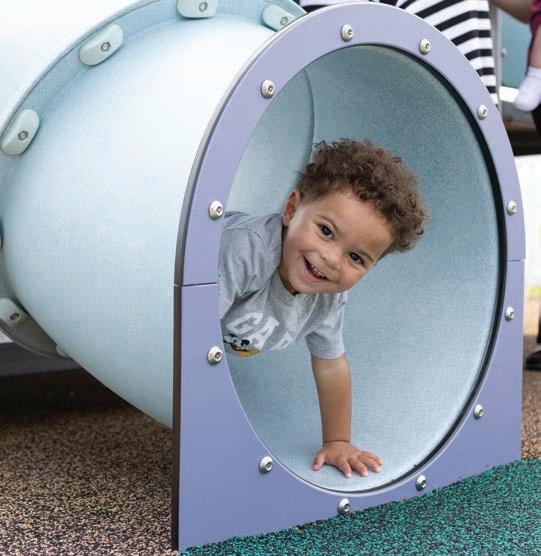
“Play gives children a chance to practice what they are learning.”

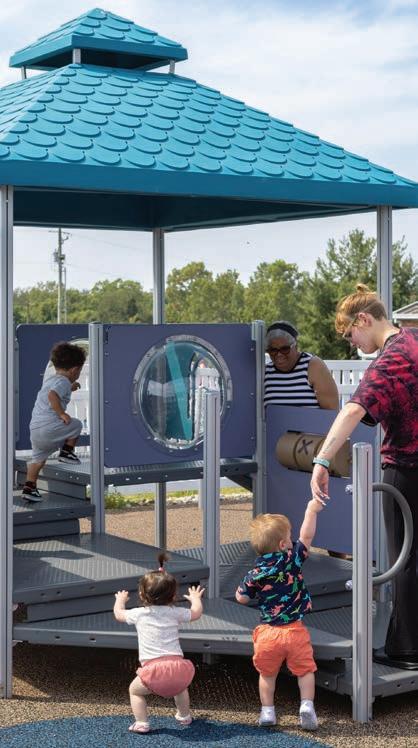
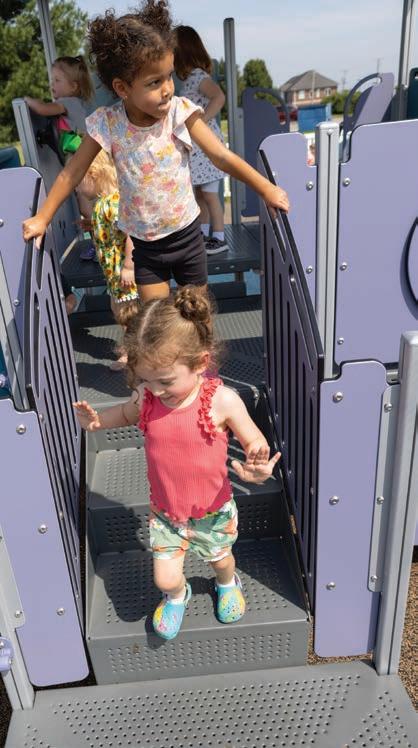
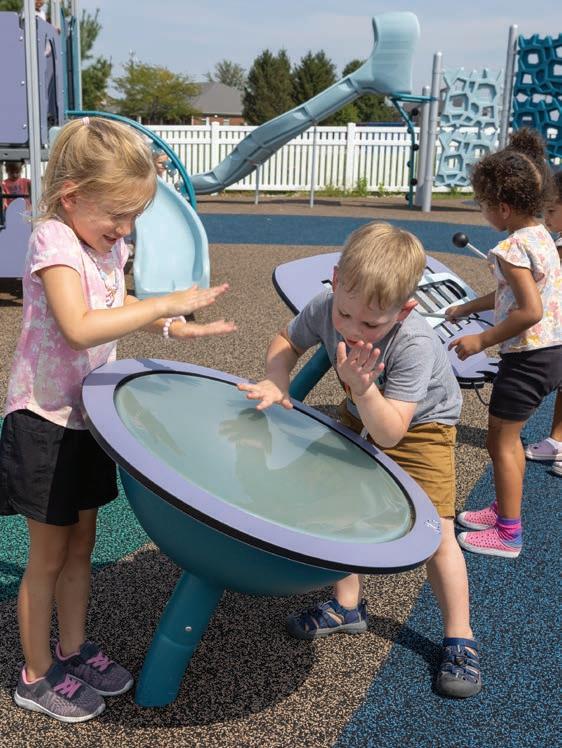
Memphis Jewish Community Center, Memphis, Tennessee
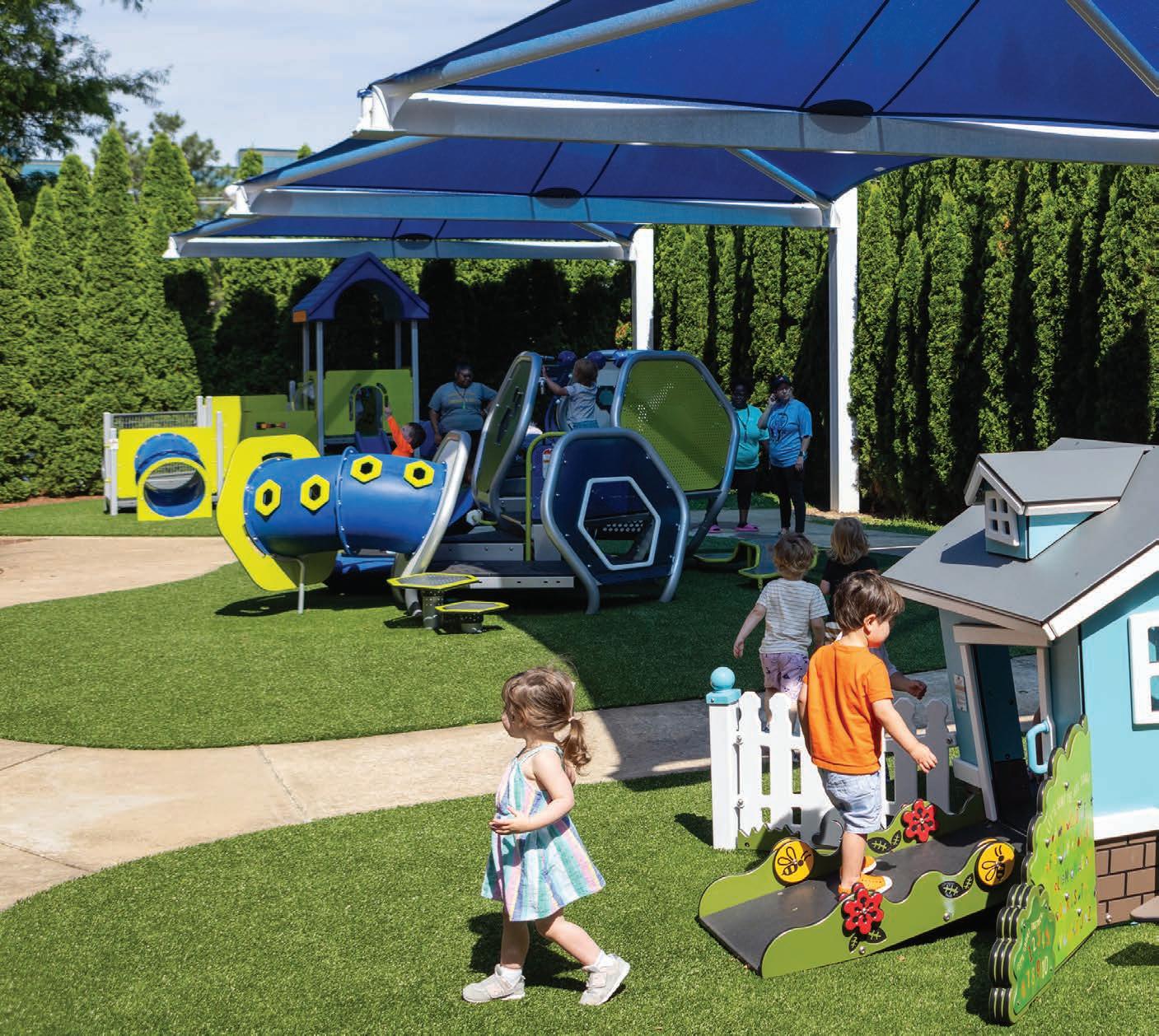
INFANTS AGES 6 TO 23 MONTHS
EARLY CHILDHOOD AGES 2 TO 3 YEARS PRE-K AGES 4 TO 5 YEARS
I nfants and toddlers will focus more on what they are playing with and try to learn all about its features using their senses. At around 13 to 18 months, kids start imitative play, a form of pretend play in which they act out what they’ve observed others doing.
The Smart Play® Nook provides a whimsical opportunity for imitative play, offering a ton of pretend-ready activities within a small footprint. In addition, Nook incorporates language-rich prompts to engage kids and adults in early conversation.
With fun things to do at every turn, kids will easily find themselves immersed in parallel play.
A miniature Hedra® brings its cool geometric shape and multi-faceted play down to a level perfect for curious toddlers.
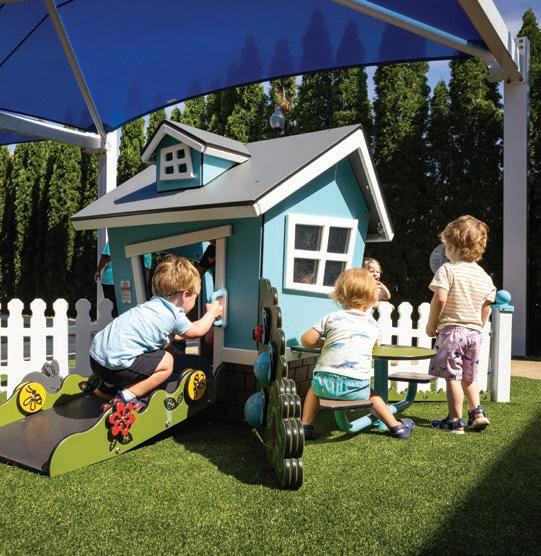
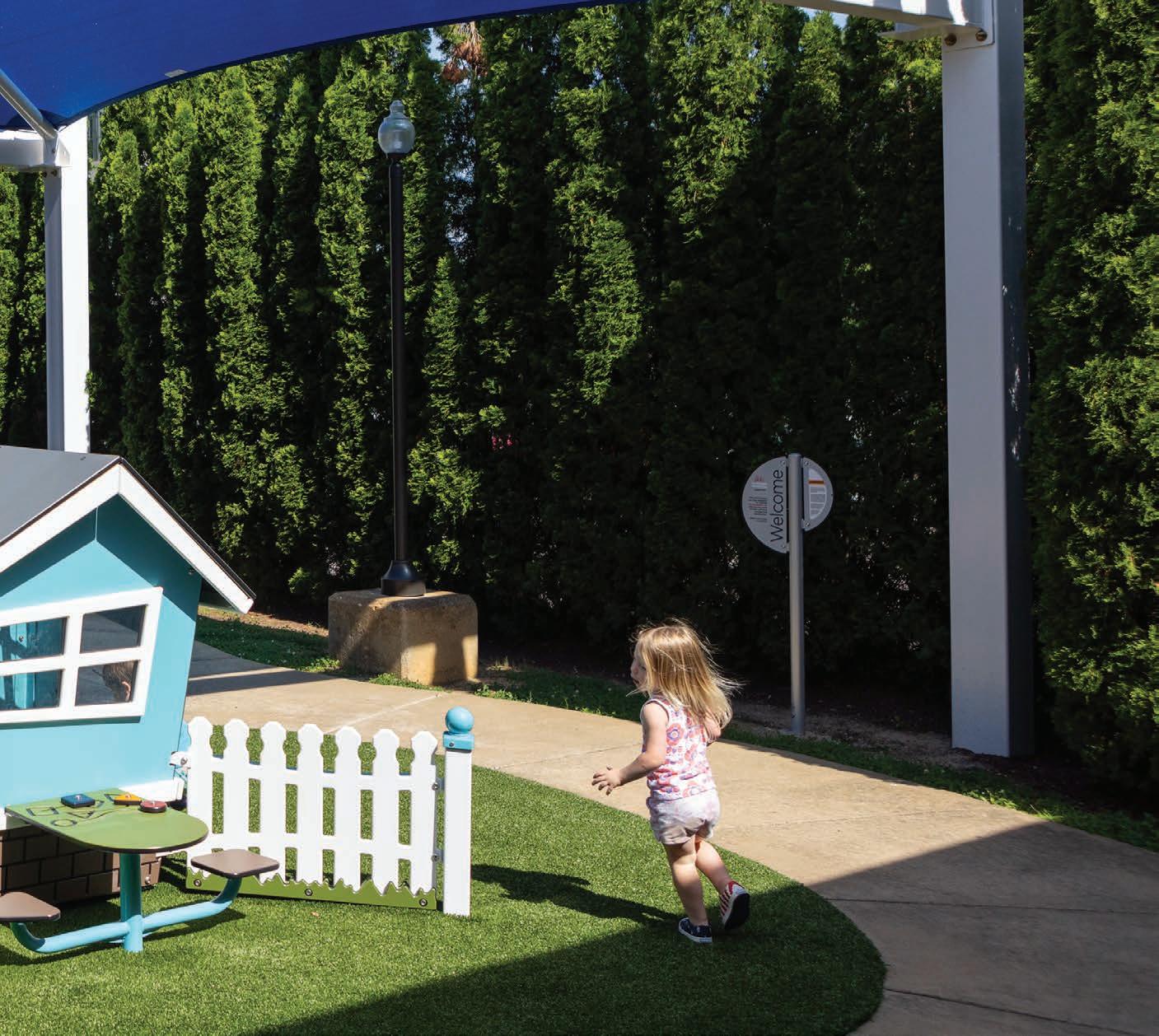
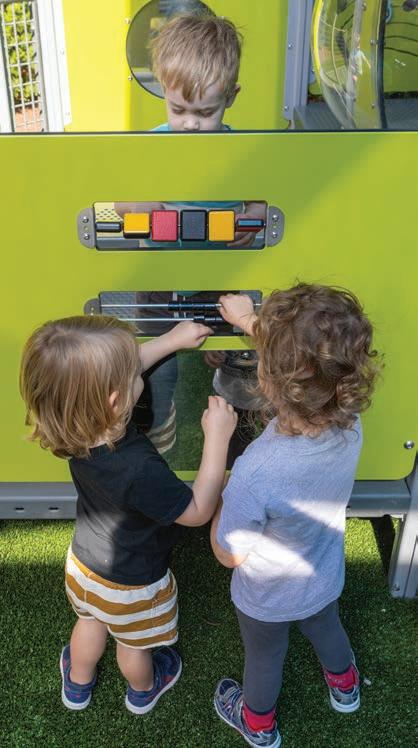
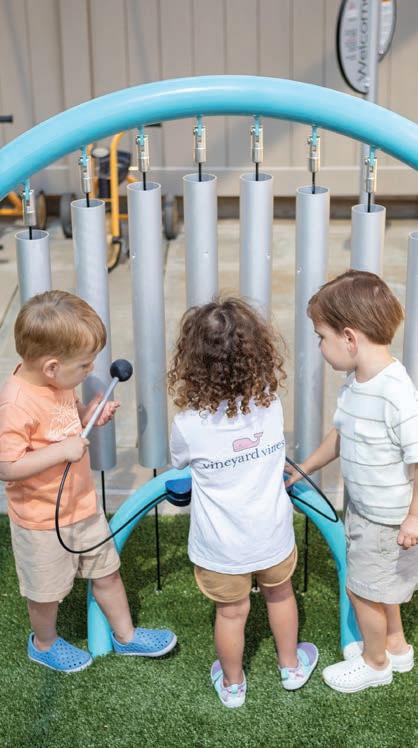

Small World Learning Center, Rincon, Georgia
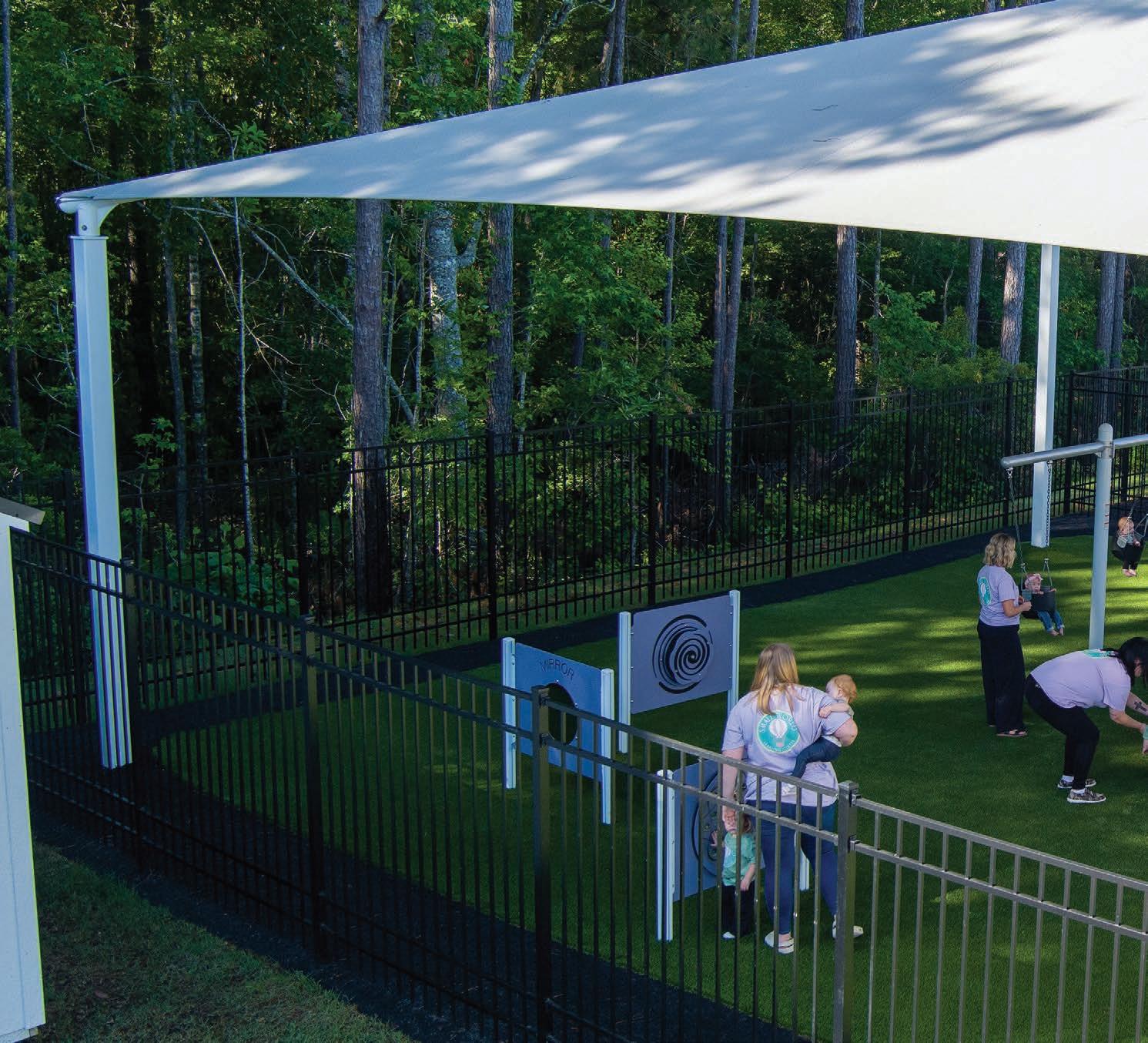
INFANTS AGES 6 to 23 MONTHS
EARLY CHILDHOOD AGES 2 to 3 YEARS
PRE-K AGES 4 to 5 YEARS
A s children develop more social skills, play evolves from parallel play to organized play with a shared goal. It’s an ideal time to encourage their creative minds and imaginations while building their cognitive skills. Fundamental motor skills will develop naturally during unscripted play on playgrounds.
Encourage burgeoning imaginations to soar sky-high with the Smart Play® Breeze®, featuring a friendly hot-air balloon surrounded by puffy clouds.
Add an OmniSpin® Spinner so kids of all abilities can experience valuable vestibular sensory stimulation. With large SkyWays® Hip Shades, they stay cool on warm days, too.
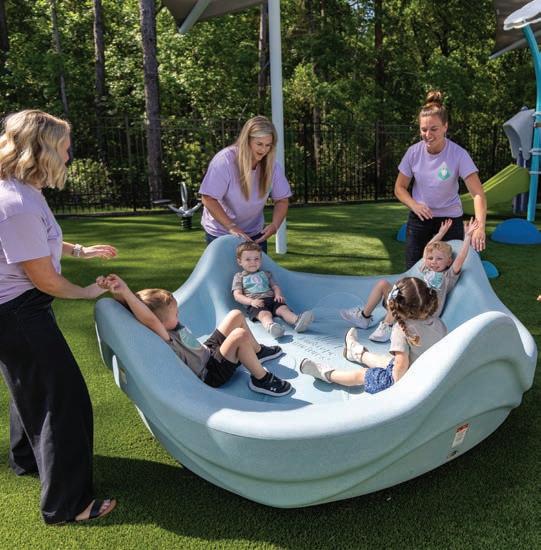
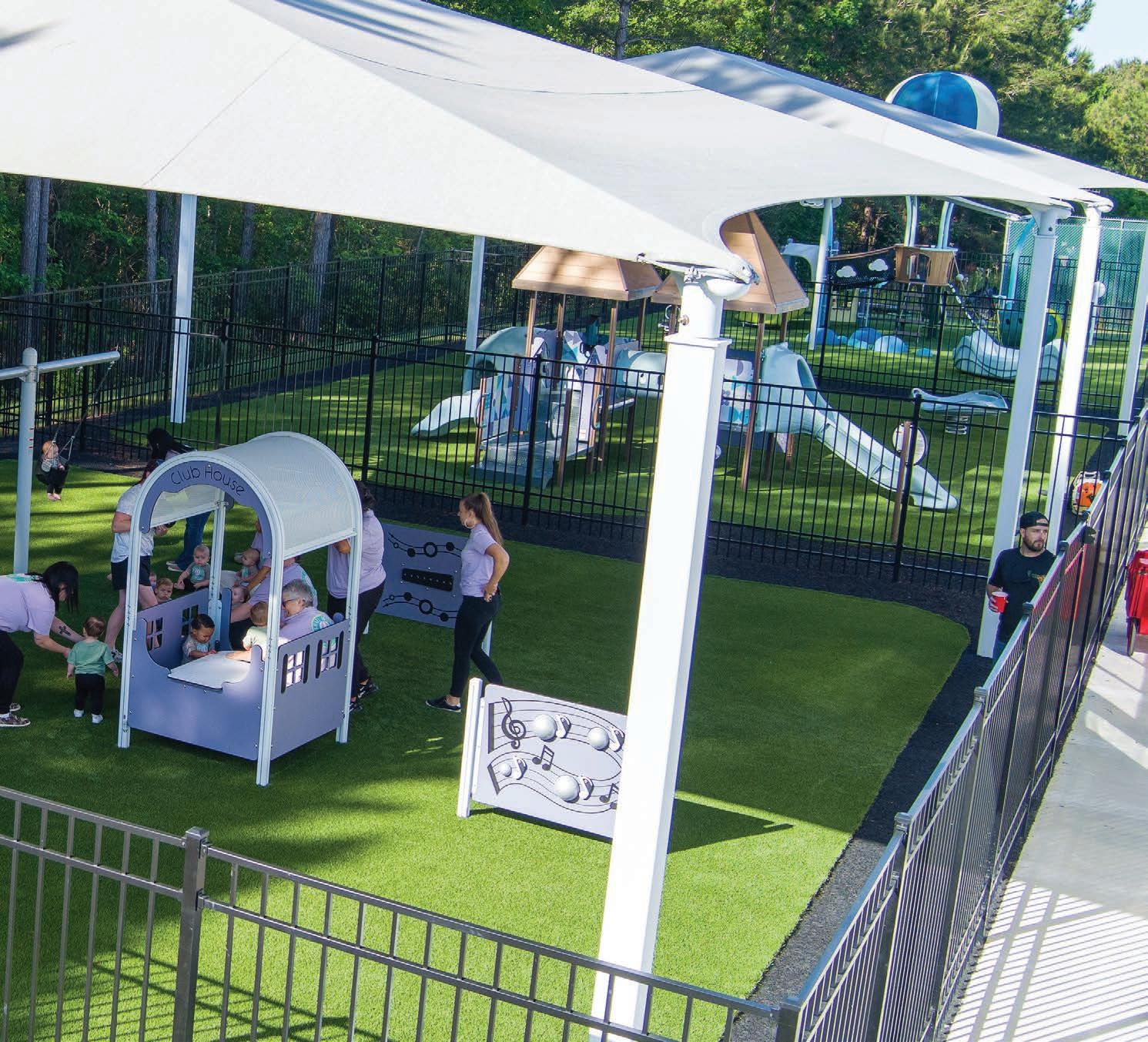
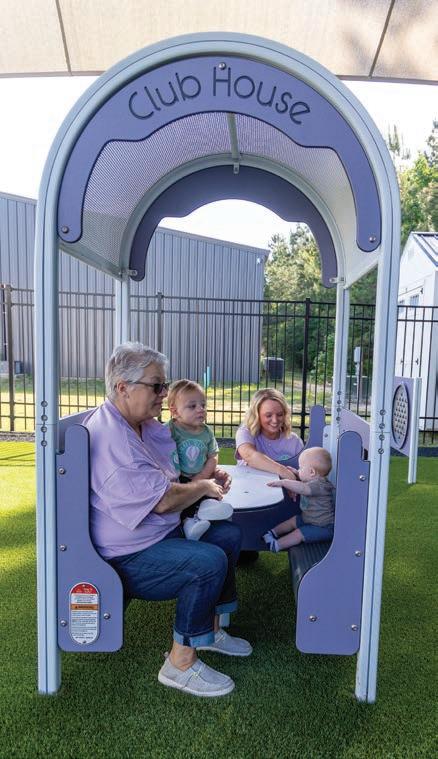

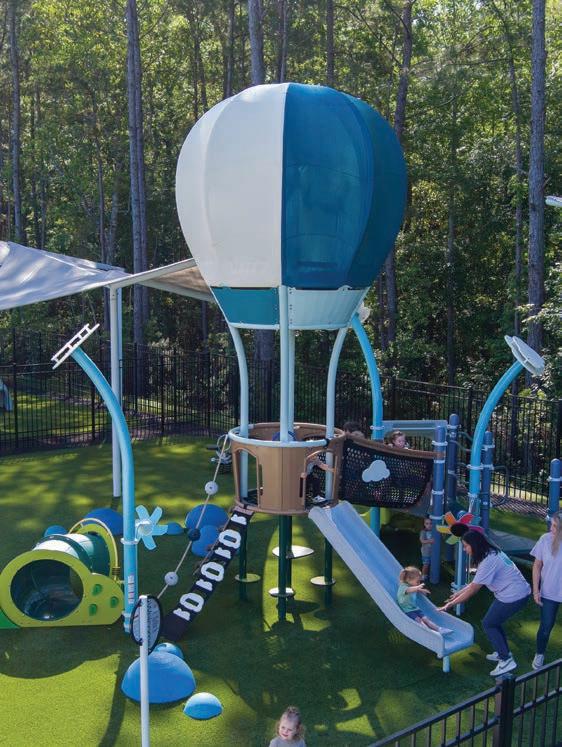
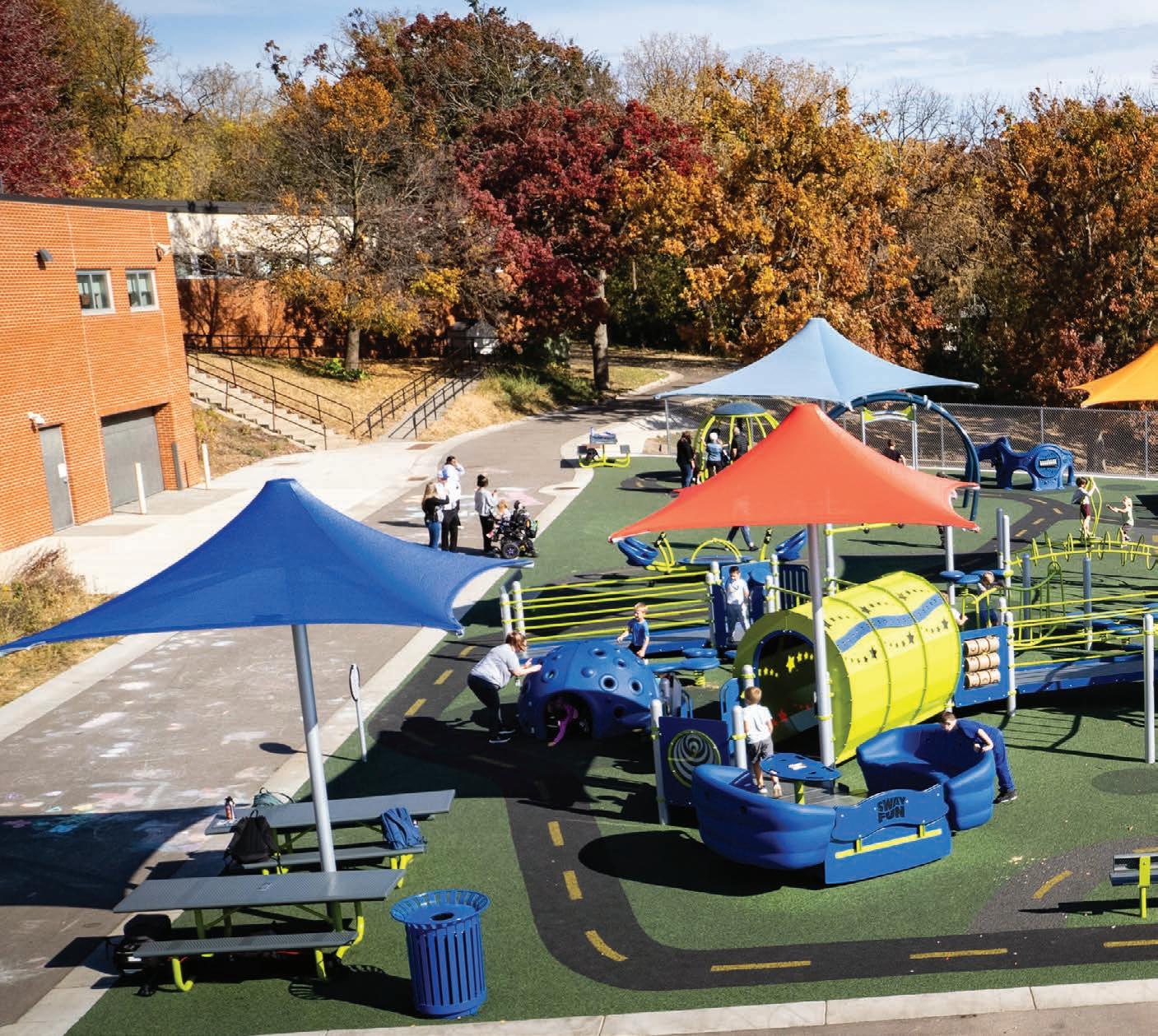
5 TO 12 YEARS
A s children develop increased flexibility, balance, agility and strength in their play, they are also becoming more logical thinkers. The Glen Lake students took logical thinking to the next level. When they saw classmates were unable to play due to inaccessible equipment, students worked to raise funds and make inclusive play a reality at their school.
In addition to ramping, kids asked for lots of inclusive activities, so they could enjoy swinging, sliding and spinning alongside all of their friends.
Unitary safety surfacing means everyone can easily get everywhere, from one end of the play area to the other.
Plenty of CoolToppers® Pyramid Shades provide cooling comfort throughout the playground.
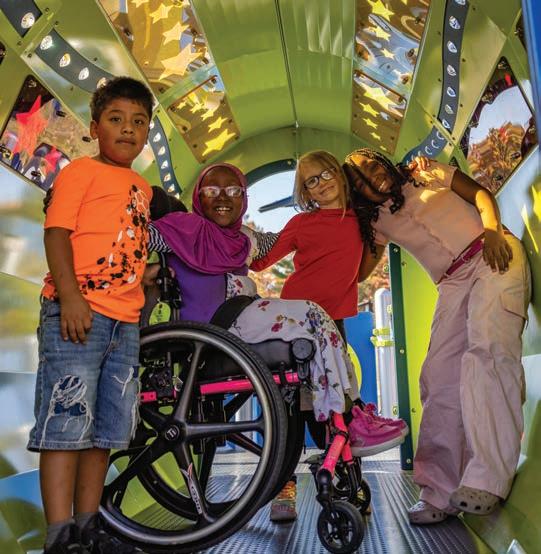
“An inclusive playground is a space where every child can shape their own play experience.”
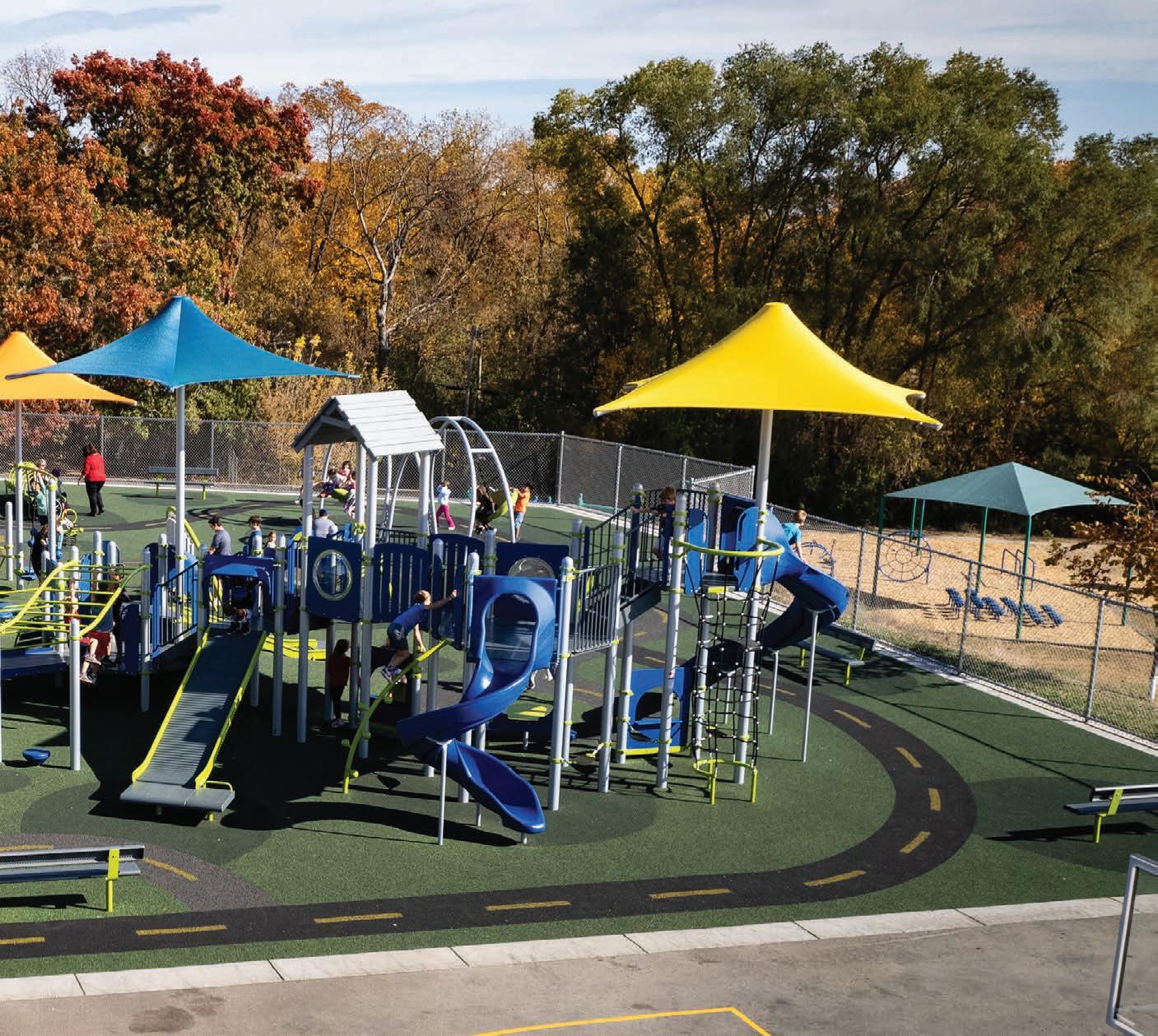
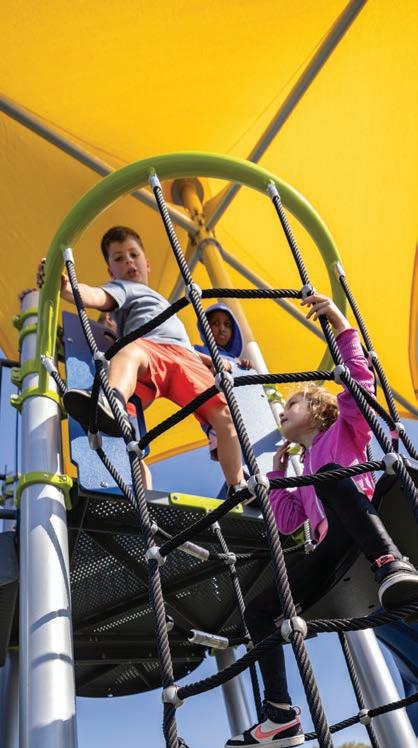
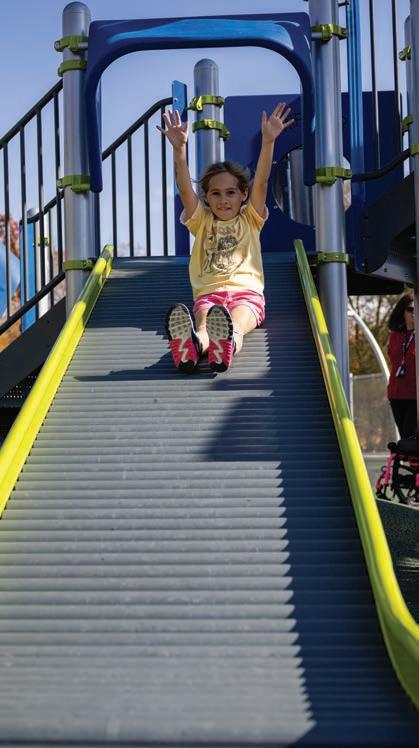

Lake Nokomis Community School
Keewaydin Elementary, Minneapolis, Minnesota
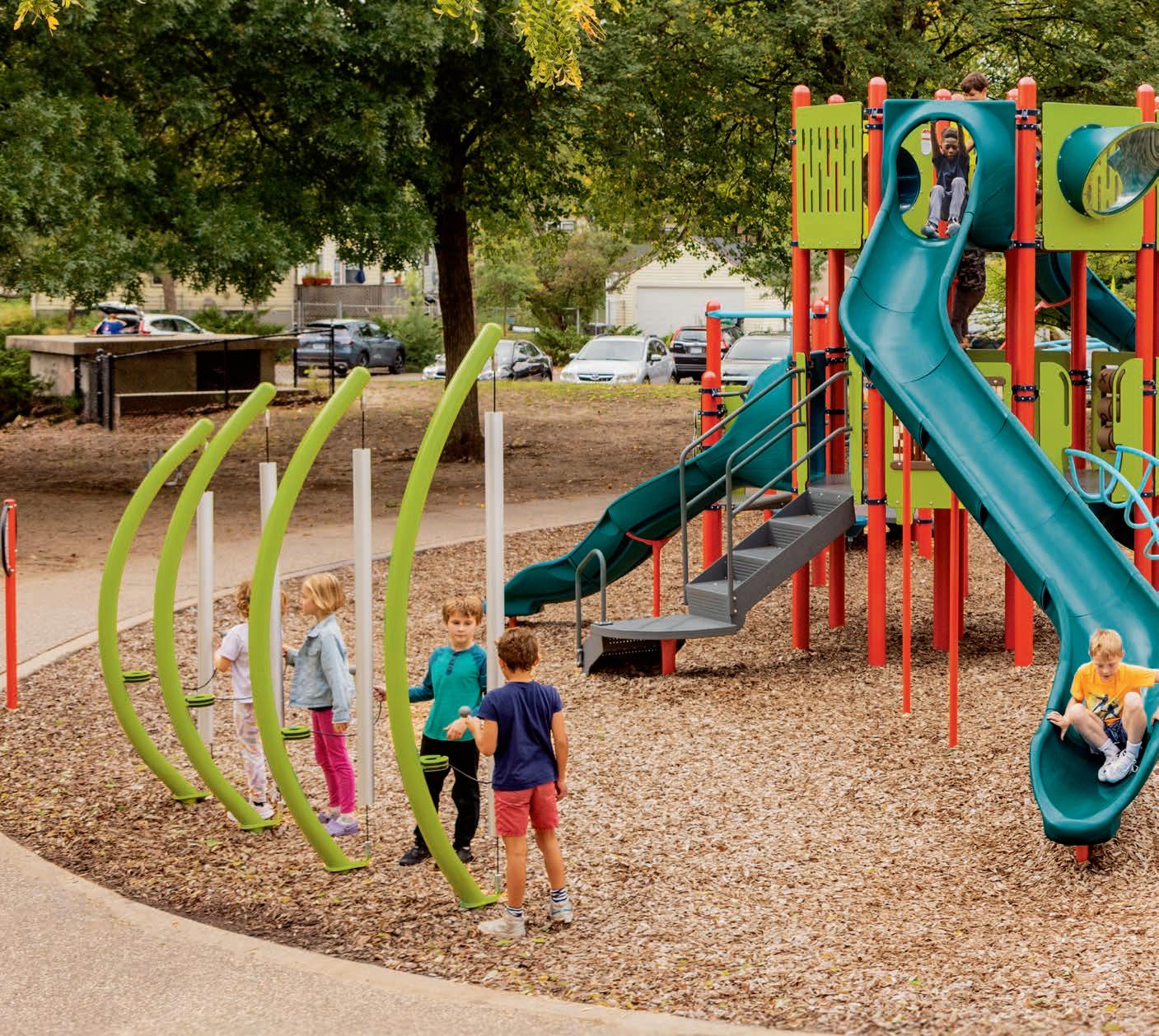
– HechingerReport.org
E lementary students may participate in games with rules, often of their own making. When creating your school’s playground, be sure to provide kids with plenty of physical challenges along with opportunities for imaginative, active free play. Consider positioning play equipment to form a circuit of continual activity, encouraging simple games of tag to more complex games of invention. Here a traditional PlayBooster® PlayOdyssey® Tower meets an architectural Forma® climber, upping the climbing factor along with the WOW factor.
A more sophisticated color palette is ideal for this age group as they’ve developed beyond primary colors and appreciate greater visual stimulation.
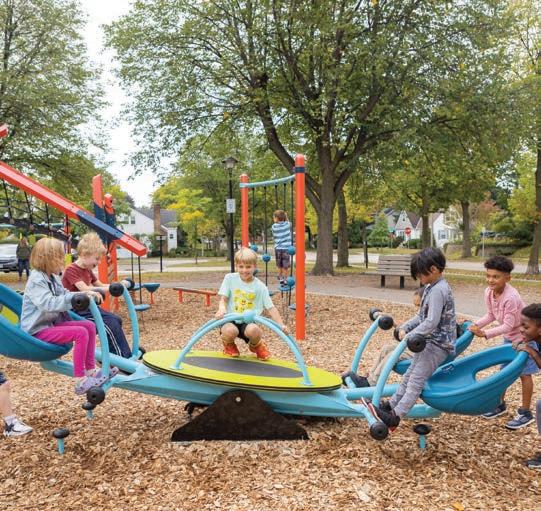
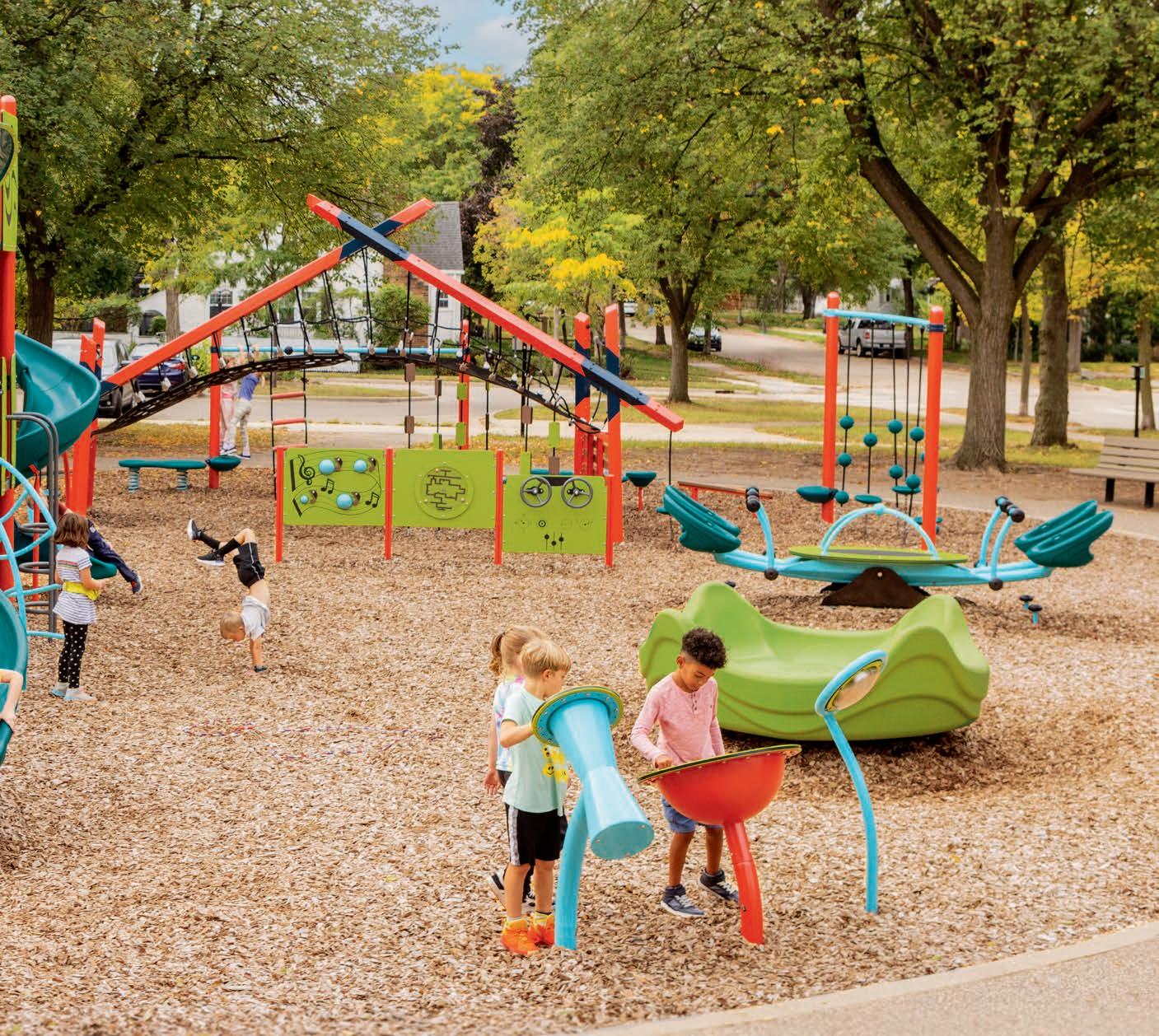
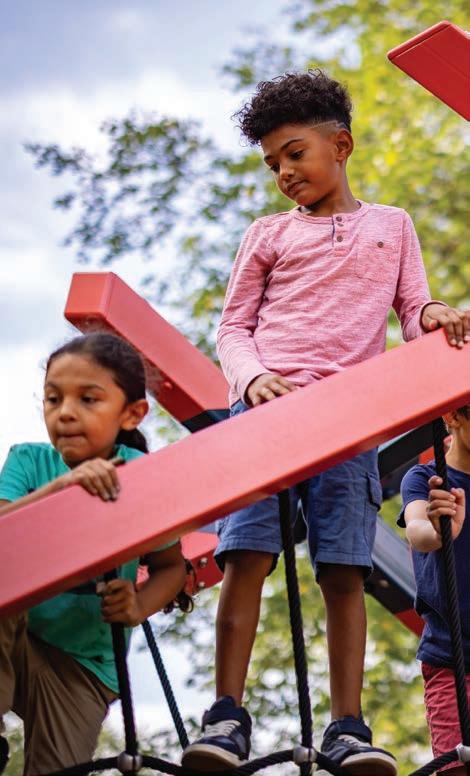
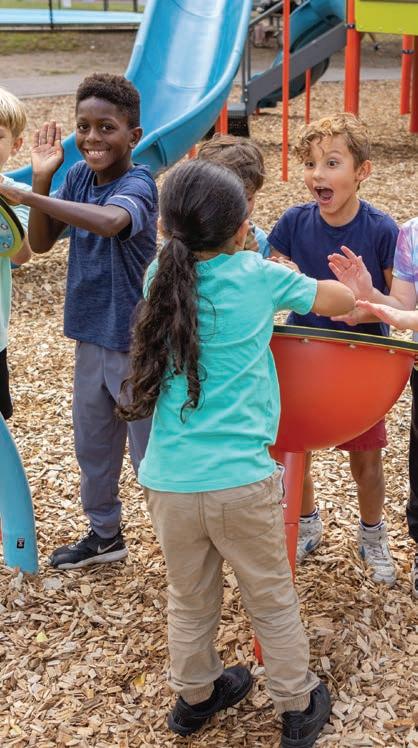

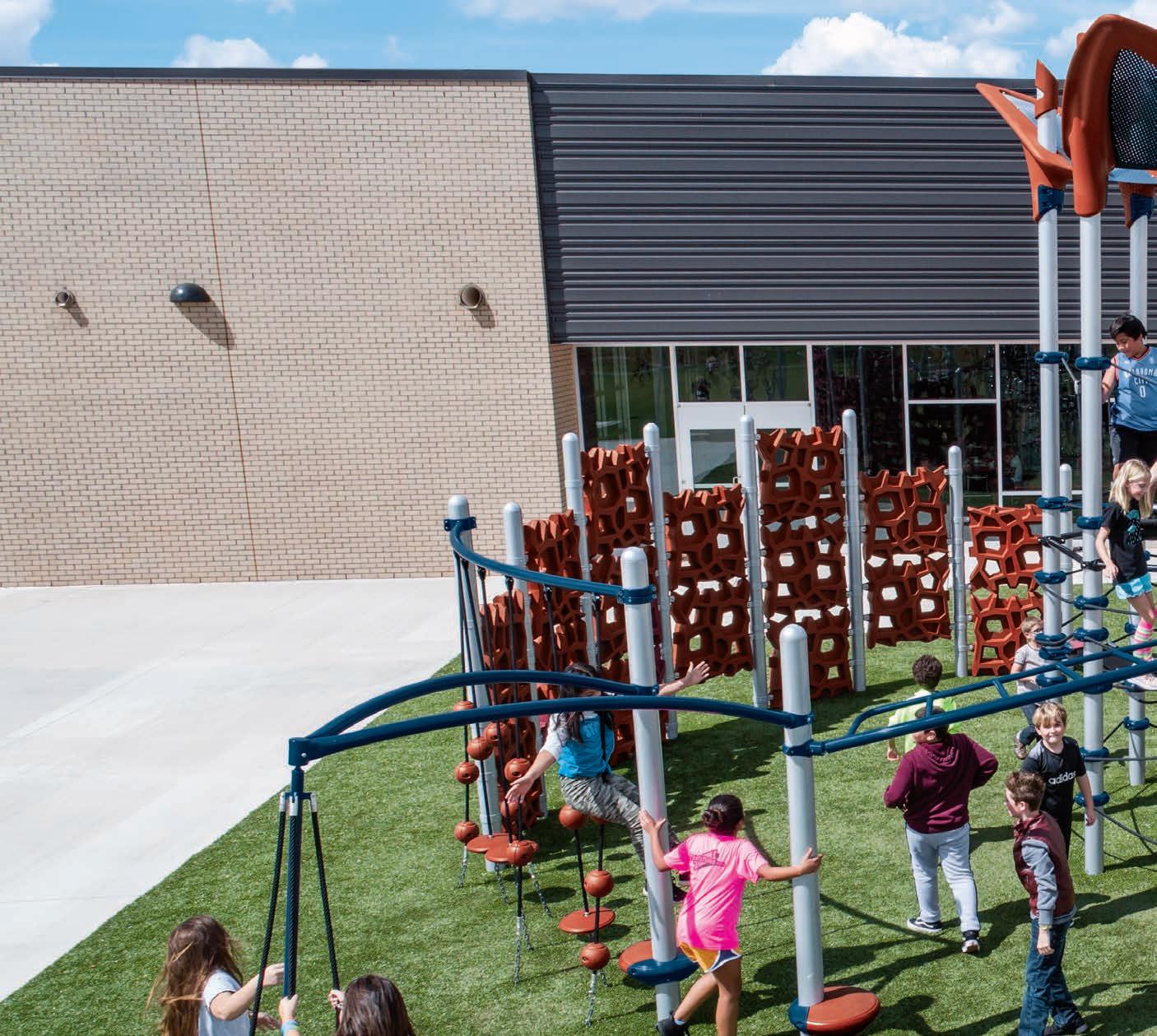
I n addition to advancing their physical prowess, muscle strength and endurance, kids this age are also developing their social and emotional learning (SEL) skills, which increasingly show correlations between academic and economic success.11 Not surprisingly, the best opportunity for students to practice these skills is during recess.12
Create spaces that allow socializing to take a variety of forms: kids may participate in lively cooperative play or choose to gather with friends in one of many built-in hang-out spots.
Groups of students engaging in both passive and active play get to exercise their negotiation skills when sharing the same space with each other.
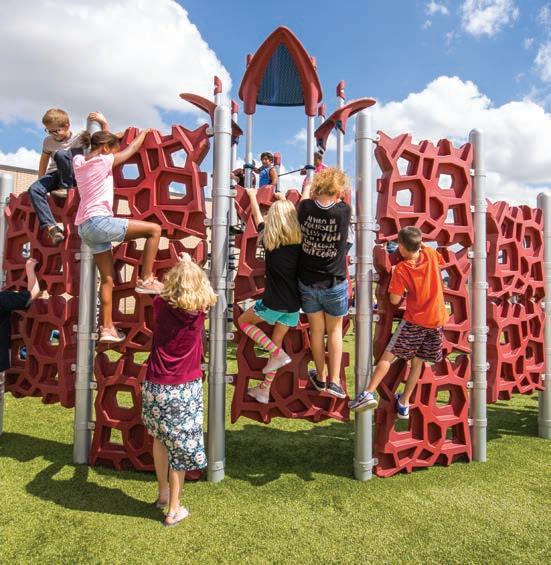
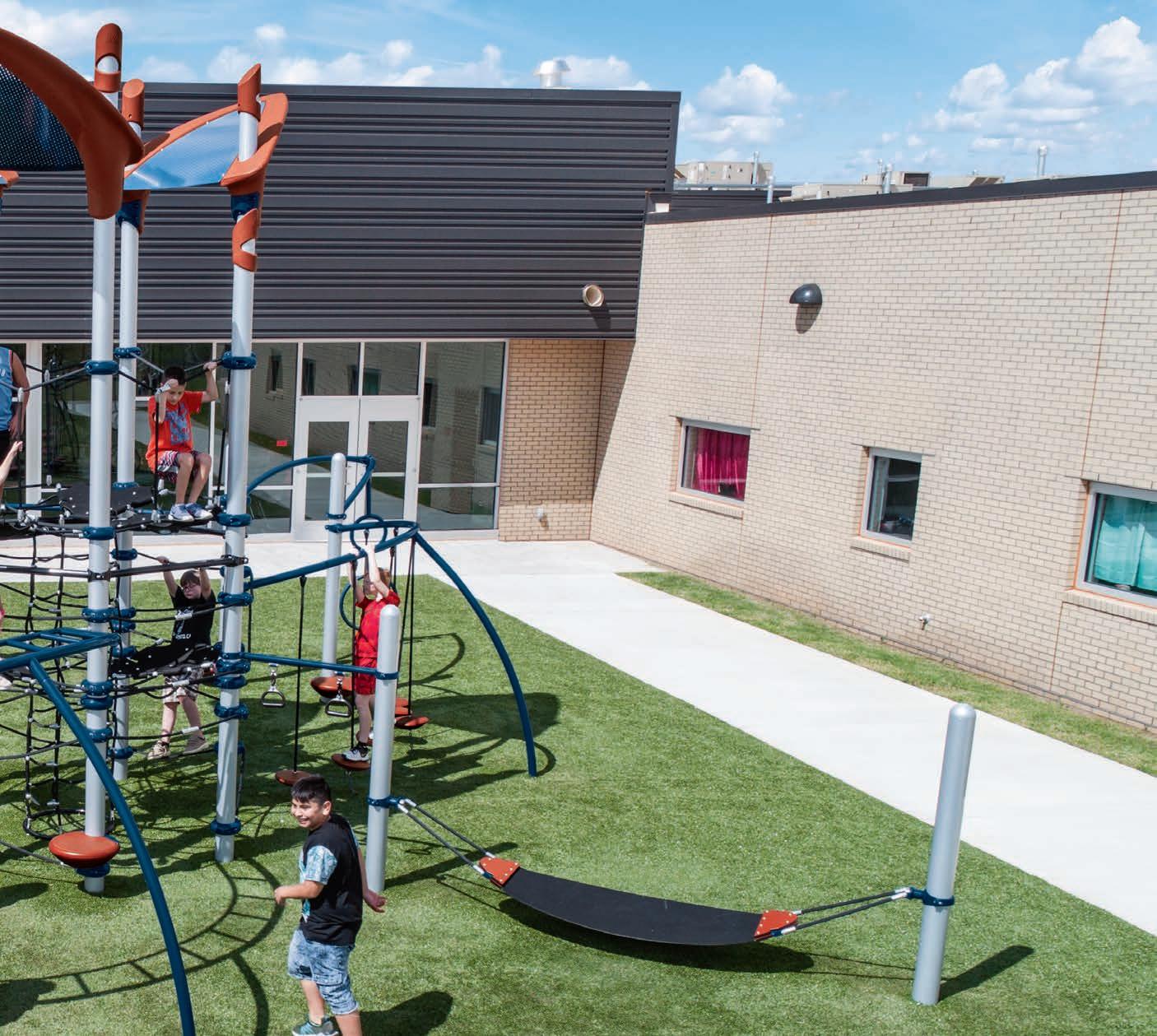
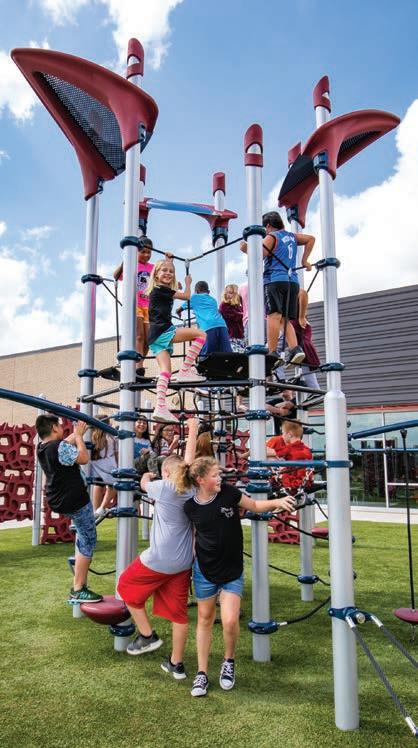
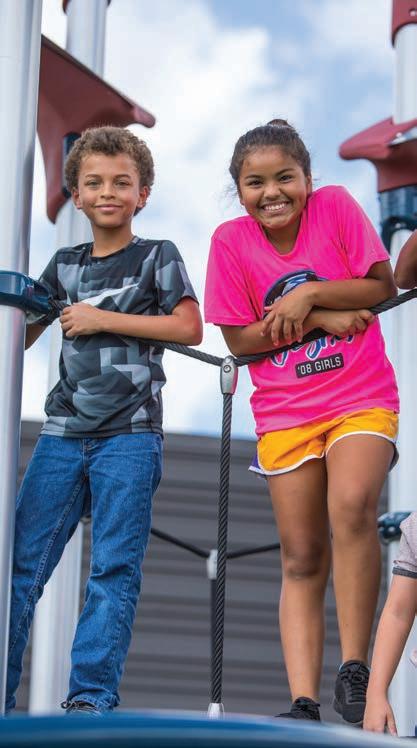
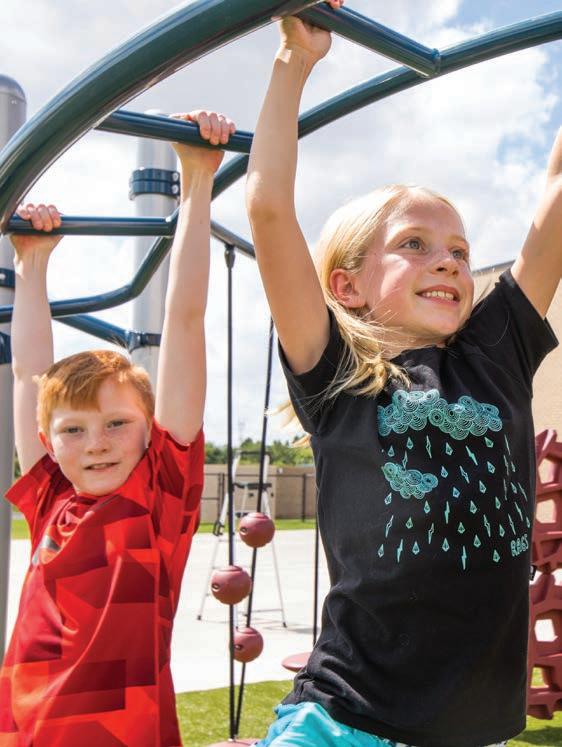
Travis Elementary SPARK Park, Houston, Texas

Children pay more attention in class after free play at recess than after physical education programs, which are more structured. – The Power of Play: A Pediatric Role in Enhancing Development in Young Children, The American Academy of Pediatrics, Clinical Report, September 1, 2018
The CDC recommends kids aged 6 to 17 years get at least 60 minutes of physical activity a day.13 Those who do are better able to think creatively and multitask.14 But according to Rebecca London, sociologist and author of Rethinking Recess, we need to do more than simply schedule the minutes in the day to ensure children experience a safe, healthy and inclusive recess.
A well-designed playstructure inspires active use by providing new challenges at every turn, so the experience is different every time.
Offer kids a choice with multiple opportunities to practice similar skills. For example, the Hemisphere Climber® and the GeoPlex® Climber let kids flex their climbing skills in uniquely different ways.
A nature-inspired theme helps underscore the many benefits of playing outdoors. Here, steel roofs featuring a laser-cut leaf pattern create a woodland-like tree canopy and add further dimension with sensory light play.
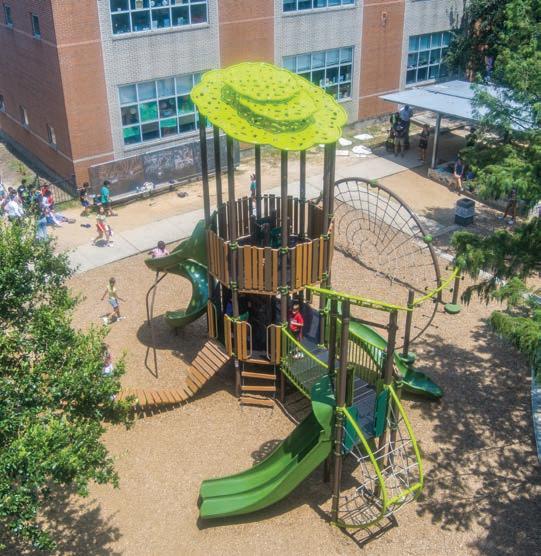
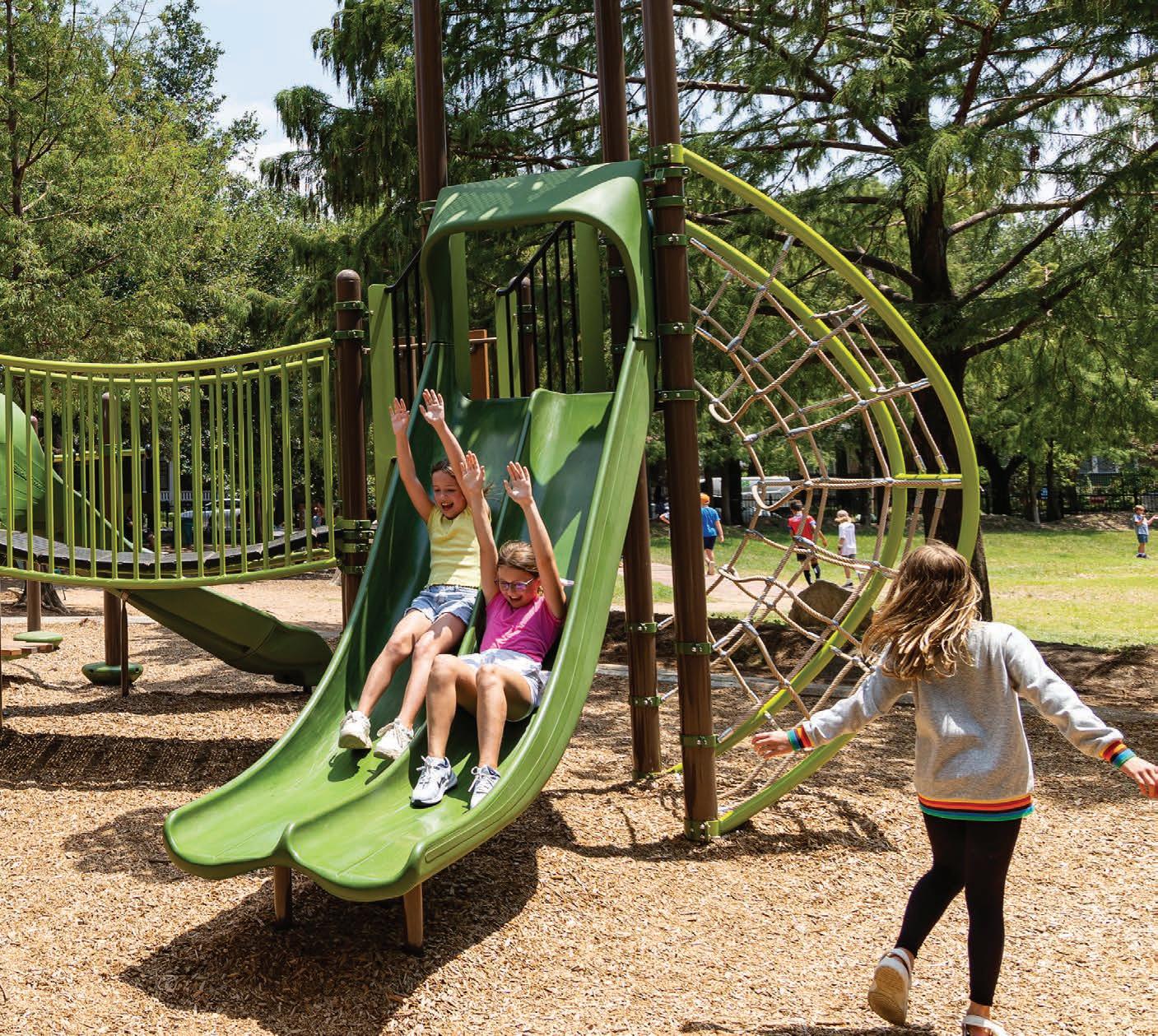
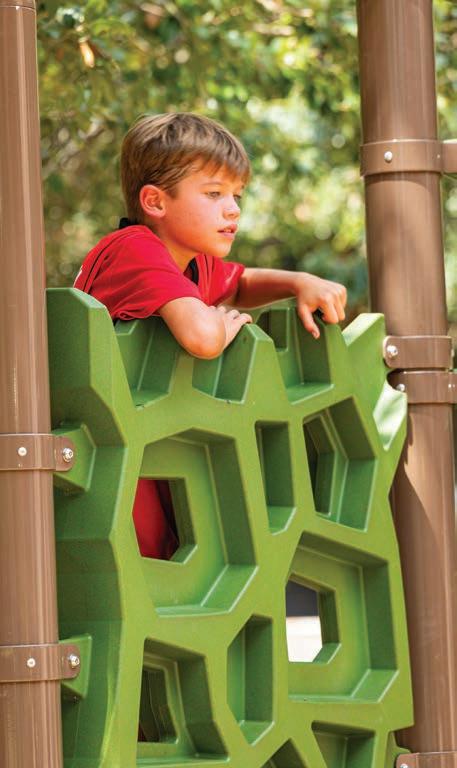
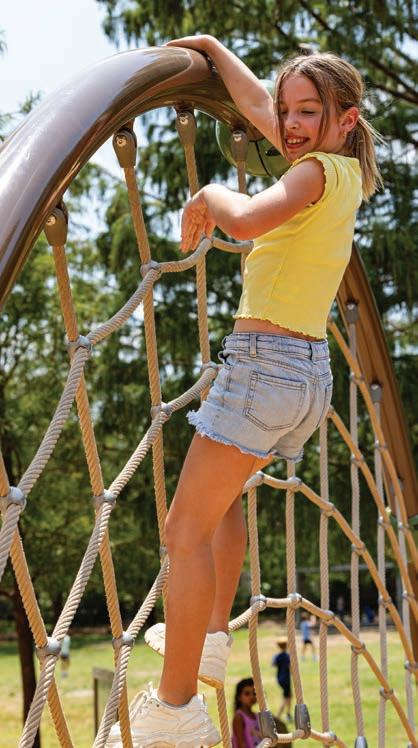
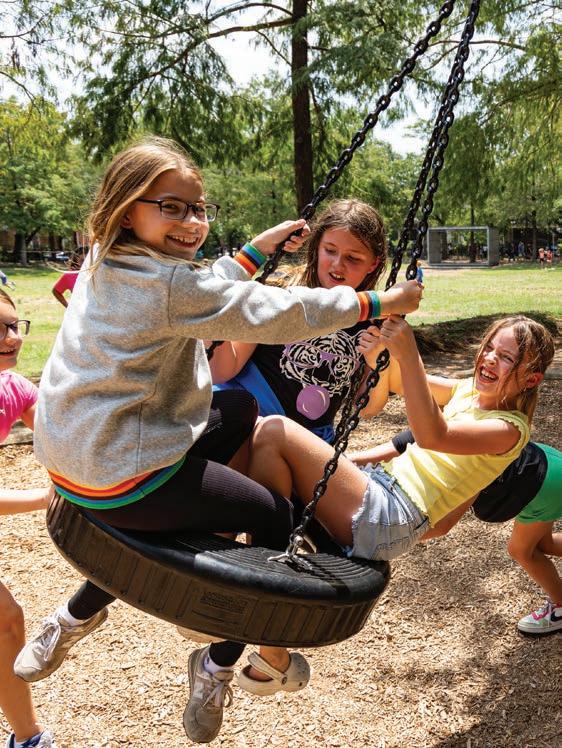
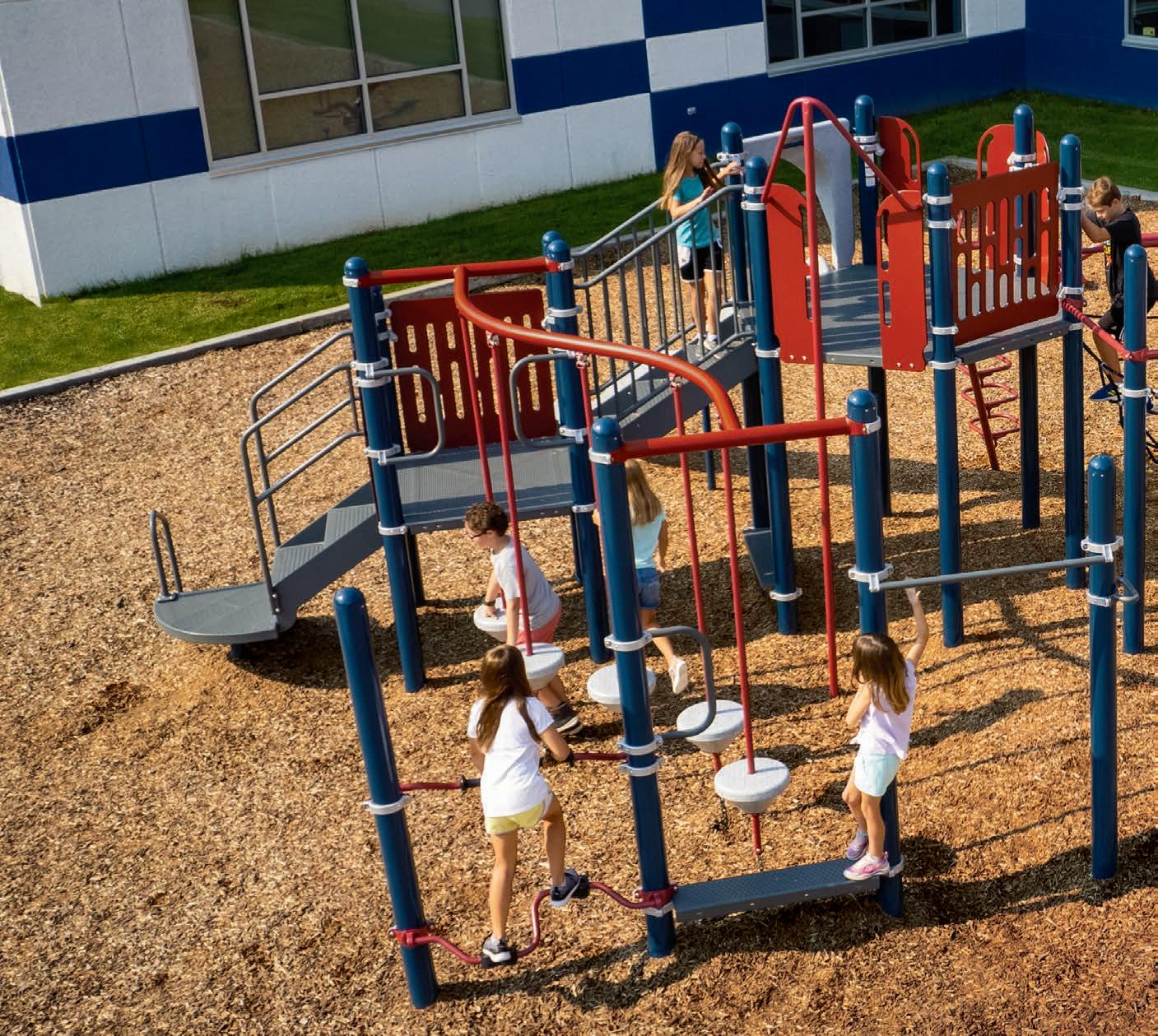
M any of the skills crucial for success in the 21st century are first developed through play—challenge, collaboration, competition, confidence and critical thinking. You can design a playground that helps promote all of these skills, even within a smaller footprint.
Be sure to include activities that challenge students’ bodies as well as their minds—quick decision-making is both a physical and a cognitive exercise.
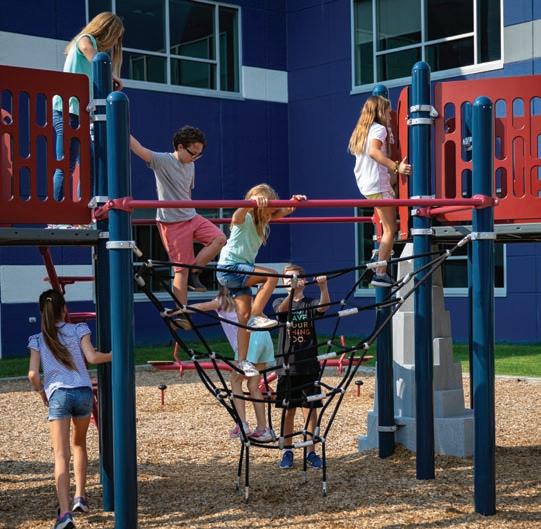
Play allows children to use their creativity while developing their imagination, dexterity, and physical, cognitive and emotional strength. Play is important to healthy brain development.
– The American Academy of Pediatrics
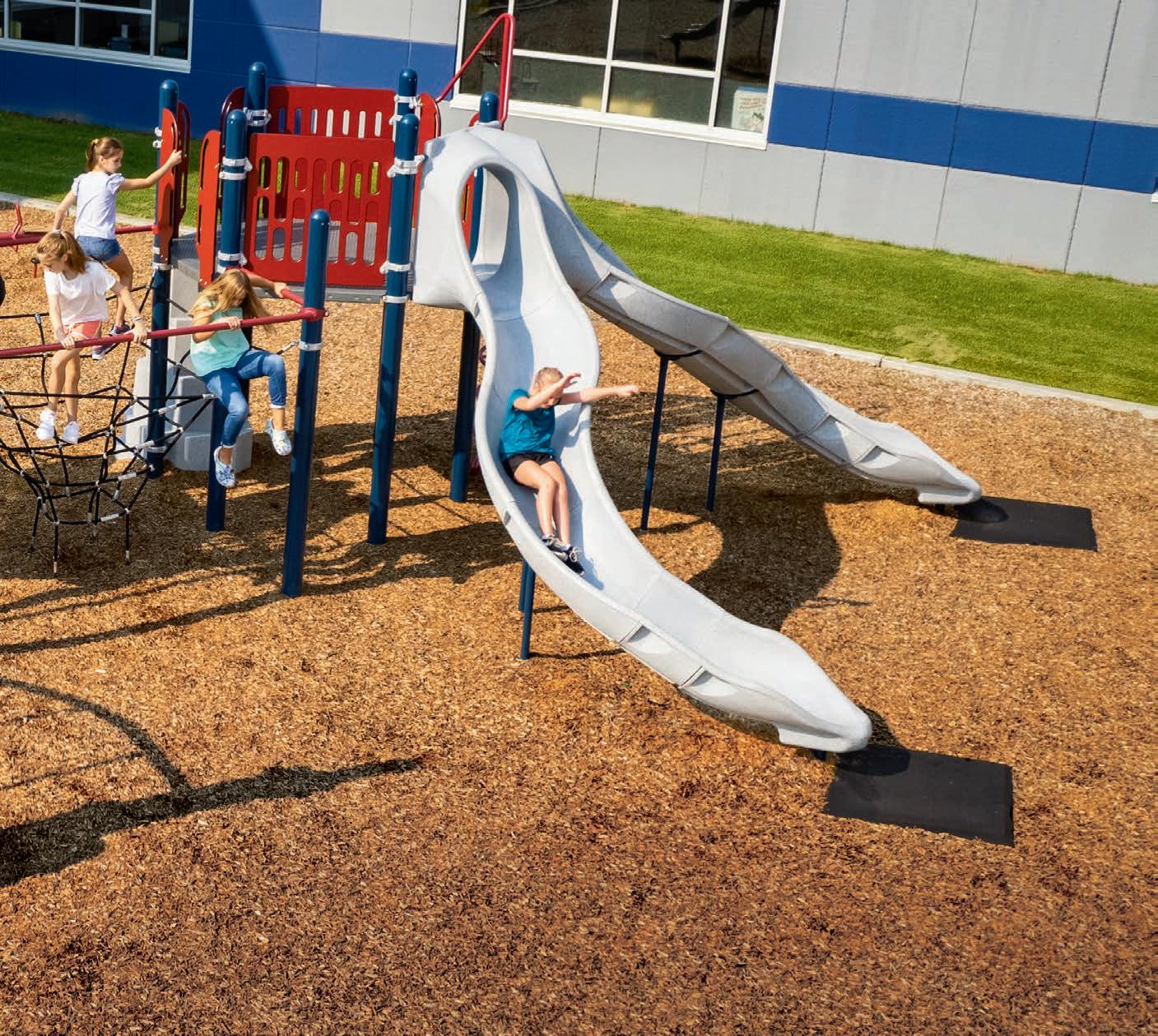
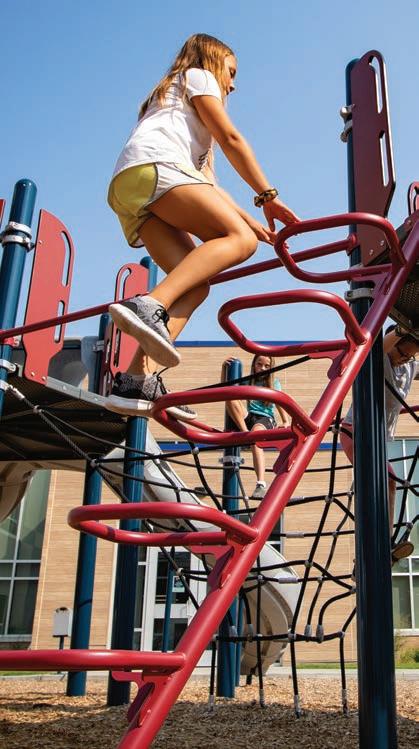

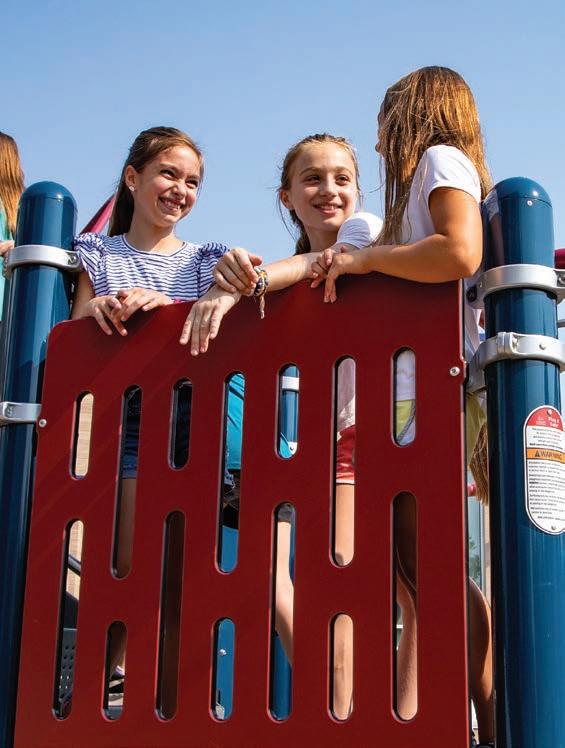

AGES 5 TO 12 YEARS
W hat if your playground could inspire imaginative games at recess AND provide learning opportunities during class? Here, for example, kids are prompted to name the planets in our solar system, discuss the science behind rocket propulsion, learn about everyday uses for satellite technology and so much more.
A thematic concept can position a playground for valuable STEM learning, but the artistry of its design can elevate it to full-on STEAM.
This imaginative surfacing design literally lets kids climb from the moon’s surface into the capsule-like Hedra® tower, then slide back down to Earth. What a trip!
A huge Quantis® 8.2 net playstructure beckons with springy inclusive netting, inviting children to climb, crawl, bounce or hang out on its twists and turns.
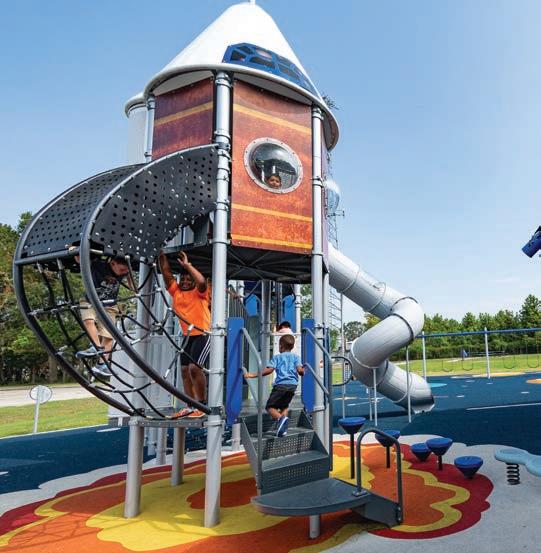


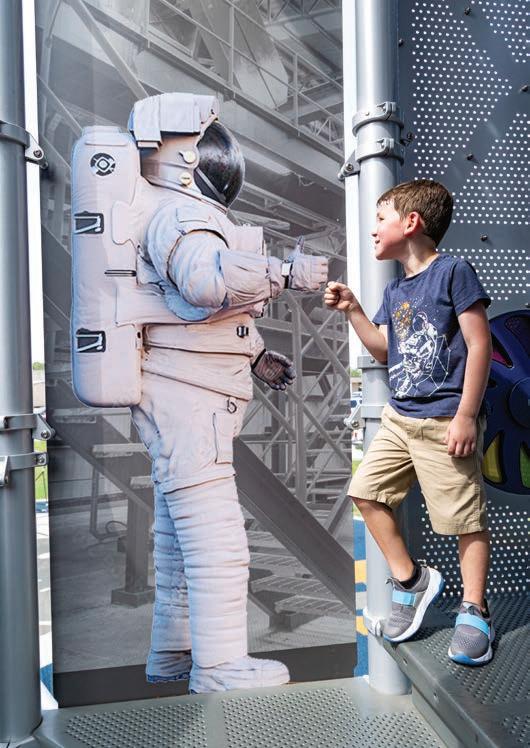
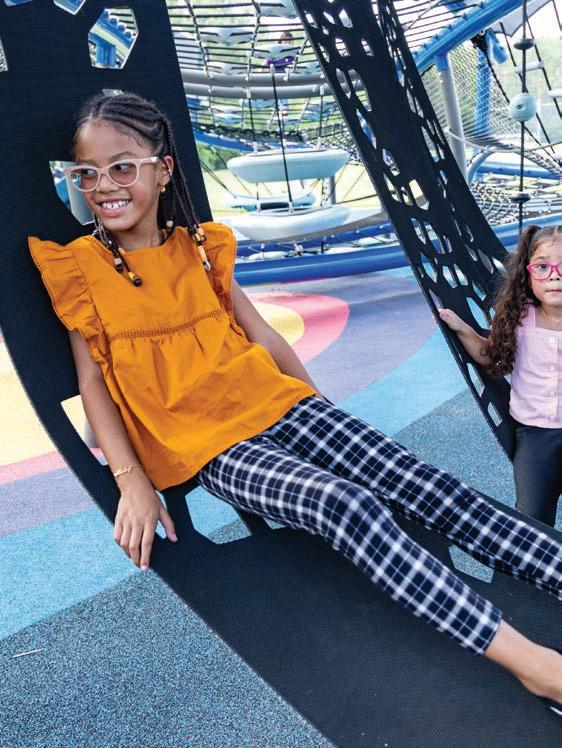
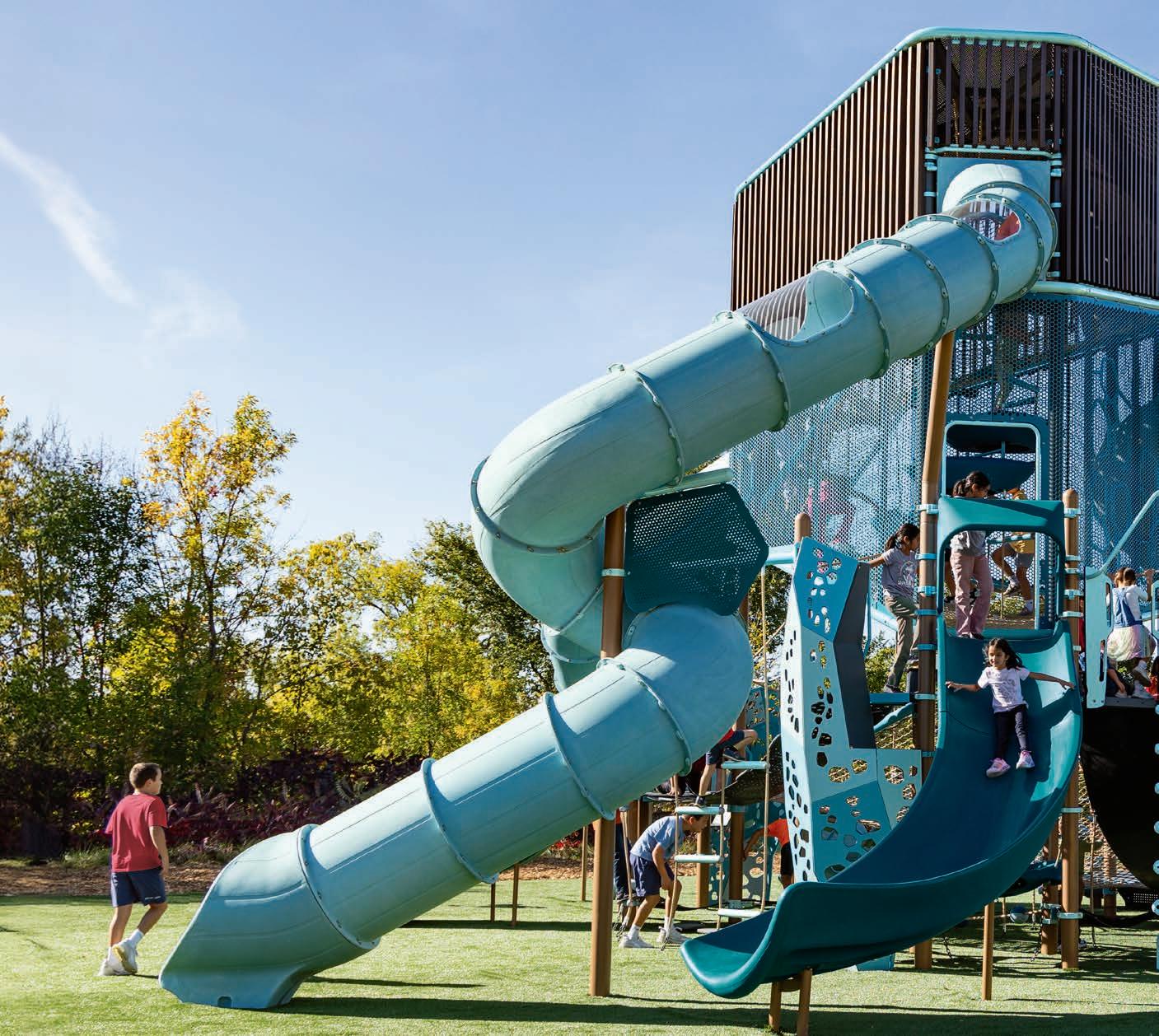
S tudies have shown that providing impressive equipment and creative surfacing designs increase physical activity levels.15 But it’s also imperative that your playground can grow with your students, offering graduated challenges that keep them engaged recess after recess, year after year.
A well-designed playstructure like Volo Aire™ will inherently keep the flow going, even when a whole crew of kids are playing. It encourages kids to create their own routes for the ultimate in unscripted play—there are no rules!
With so many different modes of climbing available within a towering and complex net structure, kids are naturally emboldened to up their own game as their skills develop over time. Kids of all abilities will enjoy testing their bravery as they climb the soaring three-story tower using the accessible LSI Flexx™ path. Upgrade the perforated panel on the Volo Aire to feature your school name and/or mascot. Then let the color palette do the rest of the work to personalize your play space.
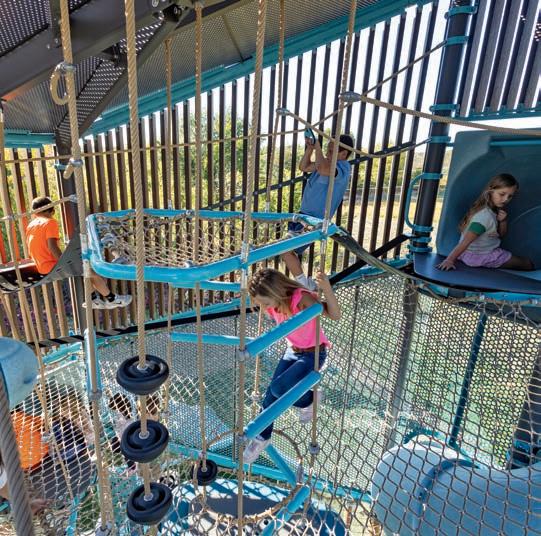
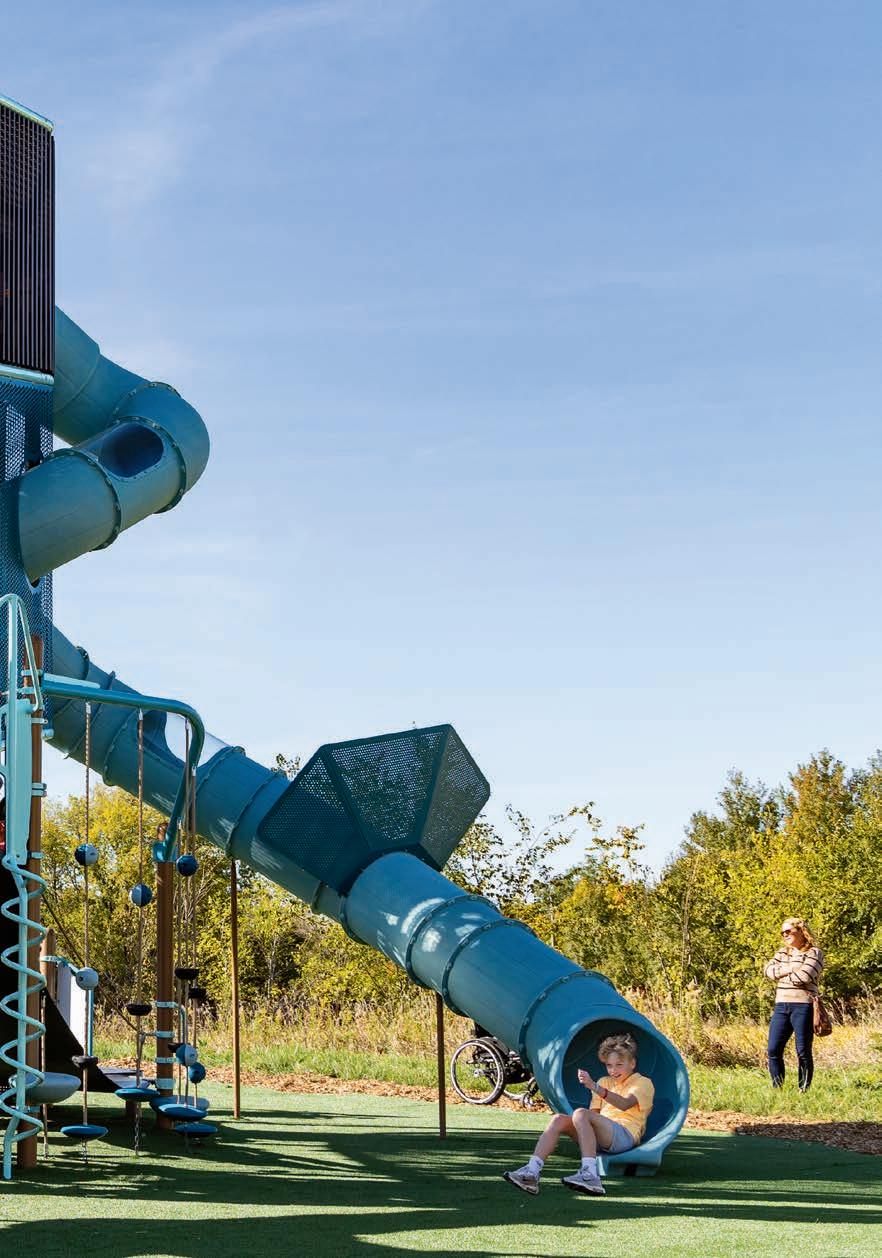
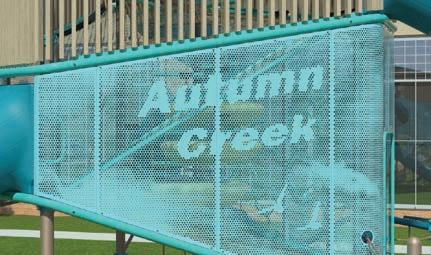
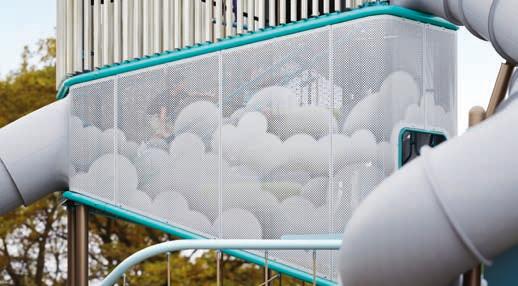
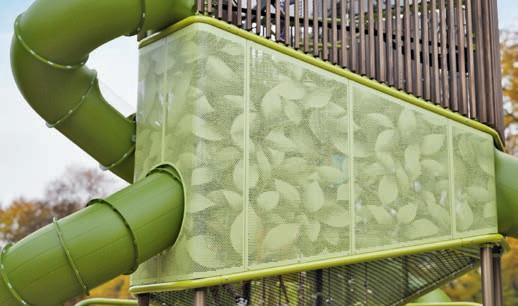
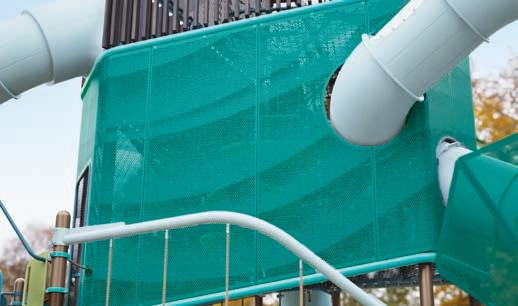
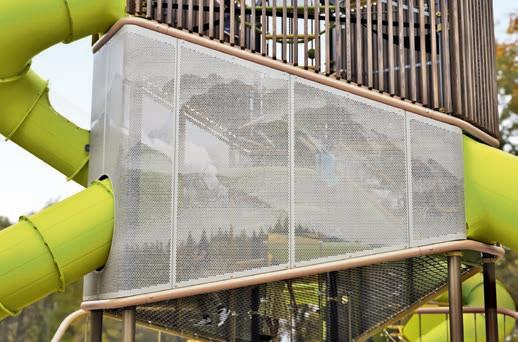
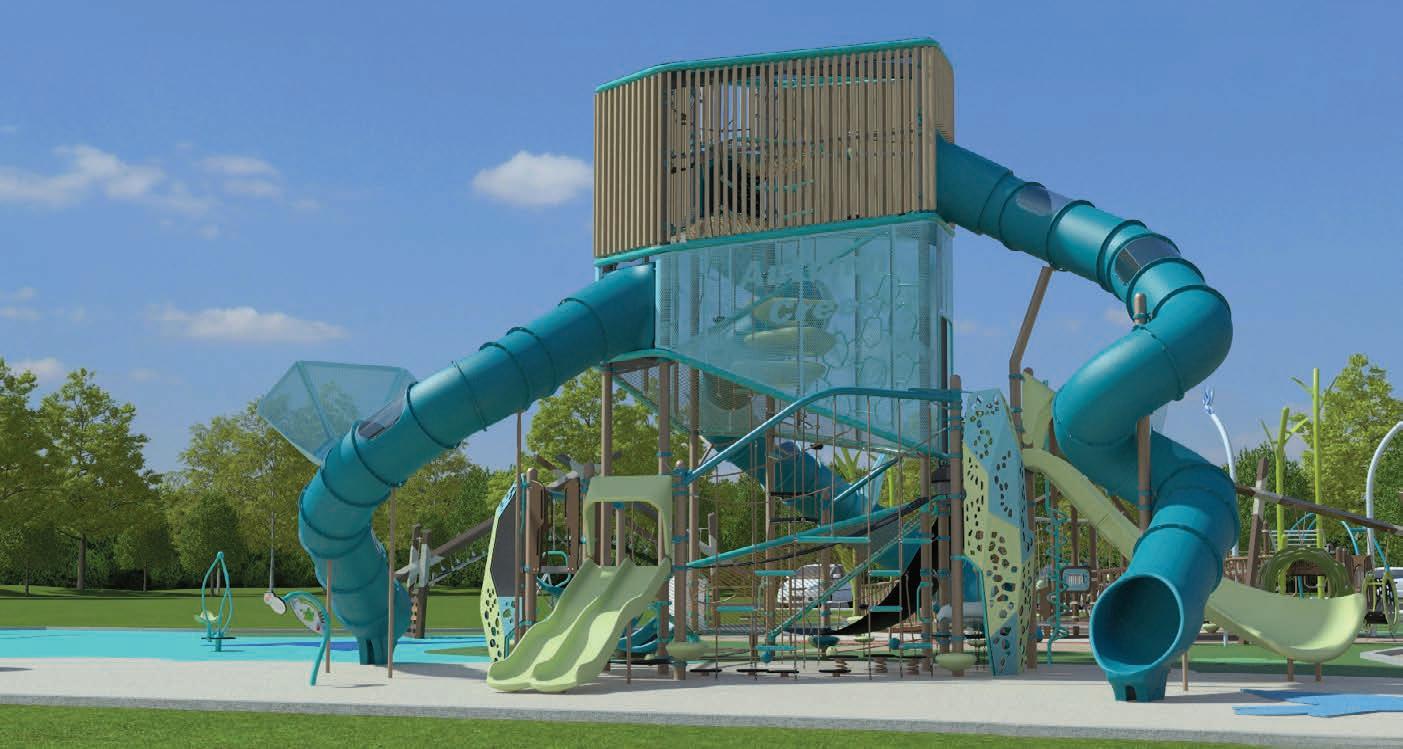
Delano Intermediate School, Delano, Minnesota
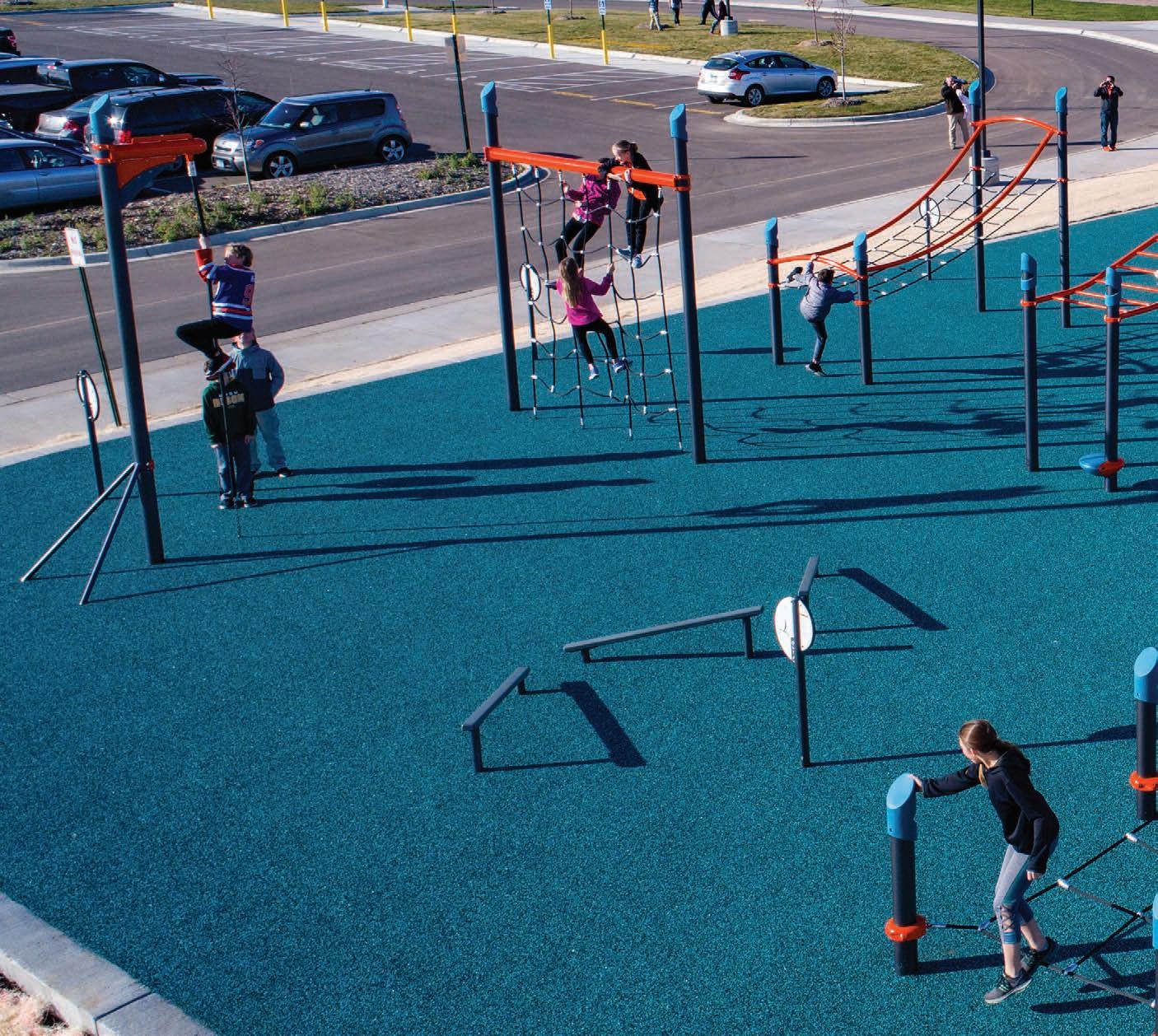
“Breaks keep our brains healthy and play a key role in cognitive abilities such as reading comprehension and divergent thinking (the ability to generate and make sense of novel ideas.)”
– Youki Terada, Senior Editor, Edutopia (article titled: Research-Tested Benefits of Breaks)
M iddle school students are ready for something more mature. A FitCore™ Extreme obstacle course is an exhilarating test of kids’ upper- and lower-body strength, coordination and problem-solving skills. Expand the workout further with a freestanding net structure like the Crab Trap® for layer upon layer of energetic net play.
If your middle school spans a wide range of ages, be sure your fitness equipment does, too. For example, FitCore Extreme offers equipment designed specifically for two different age groups: kids ages 5 to 12 years and teens/adults ages 13+.
Don’t have room for a full circuit? Select the number of components that best fit your playground’s footprint, or simply add a few pieces to an existing play area.
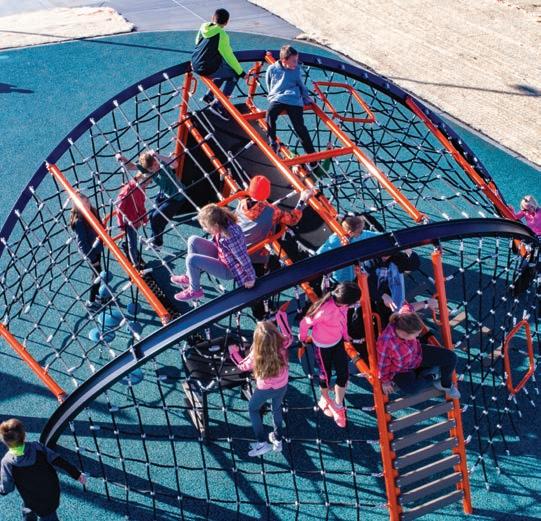
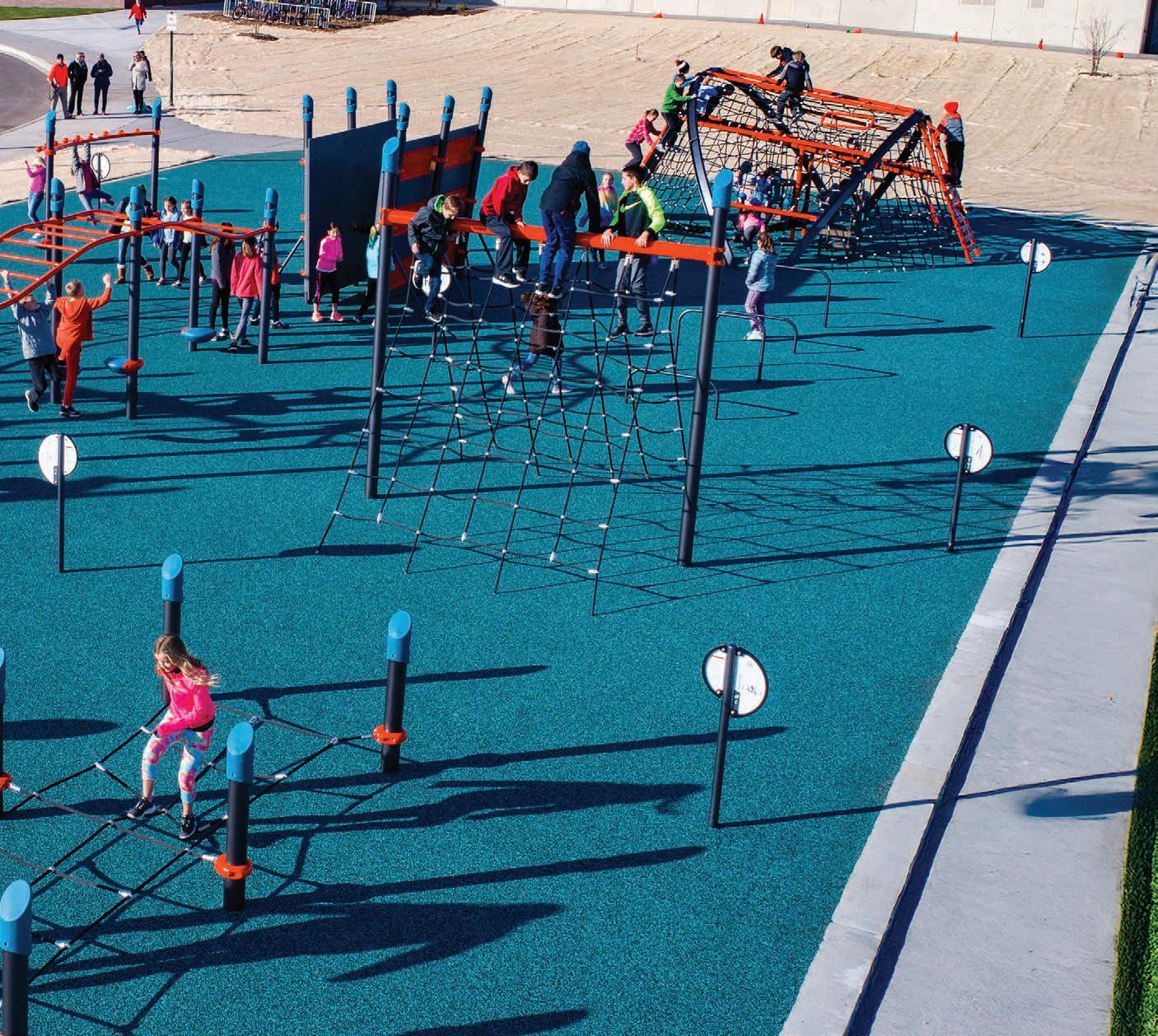

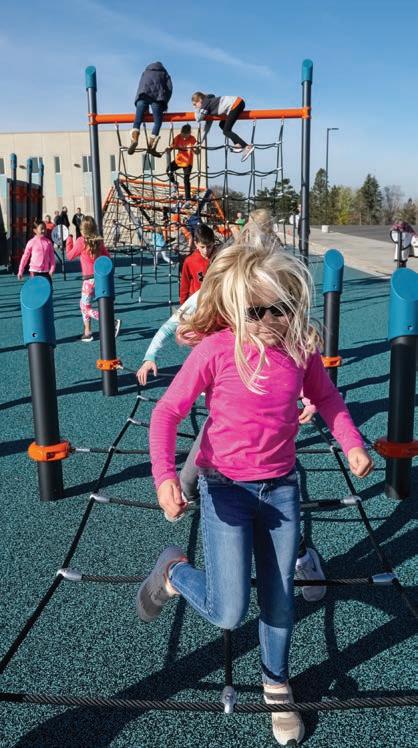

HealthBeat Circuit®
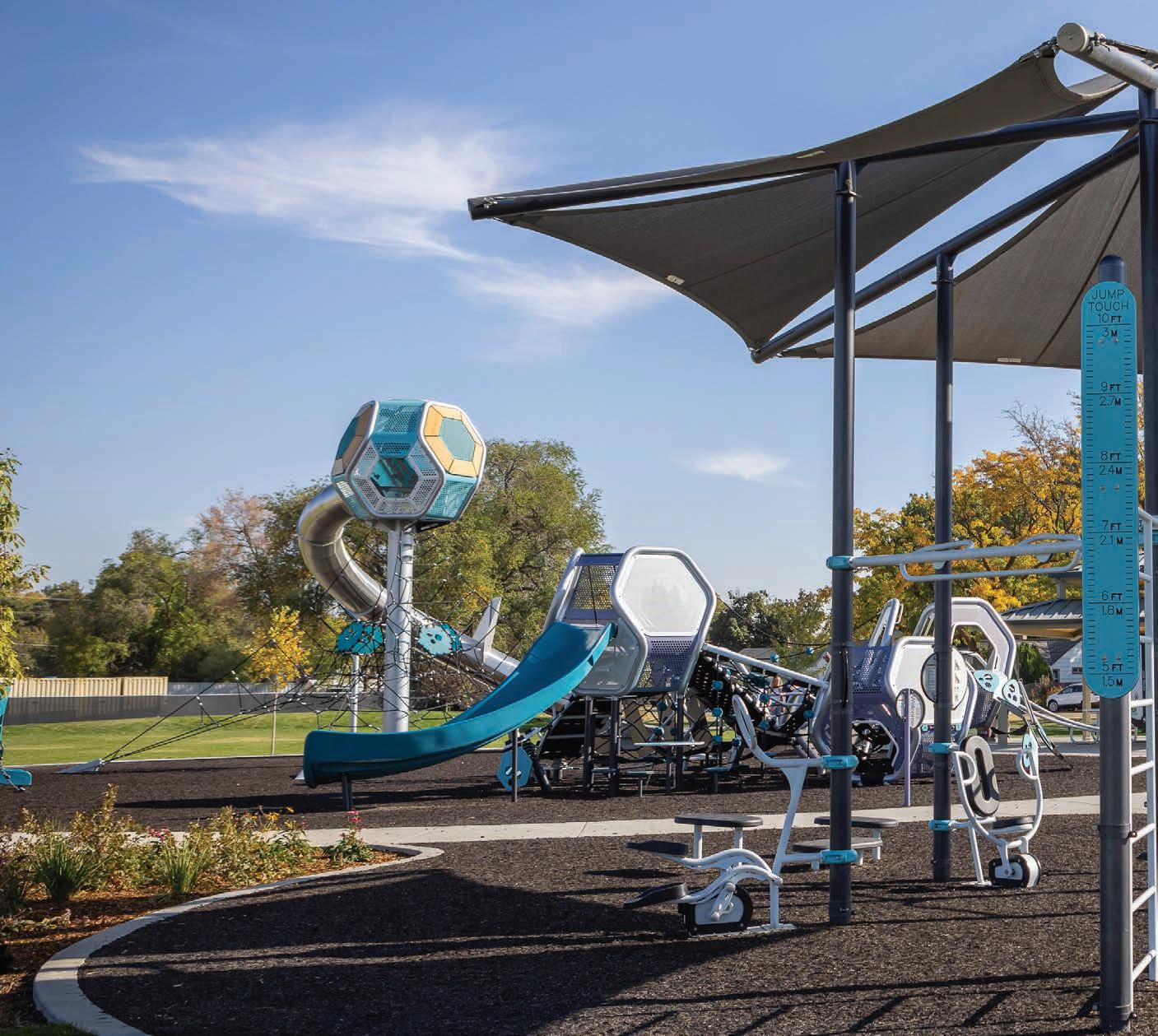
I
n its Physical Activity Guidelines for Americans, the U.S. Department of Health and Human Services recommends that school-age kids and teens ages 6 through 17 years should participate in musclestrengthening and bone-strengthening activities at least three days a week.
Designed for ages 13 and older, the HealthBeat® Outdoor Fitness System uses the latest exercise methodologies to provide a tailored workout for teens and adults of all fitness levels.
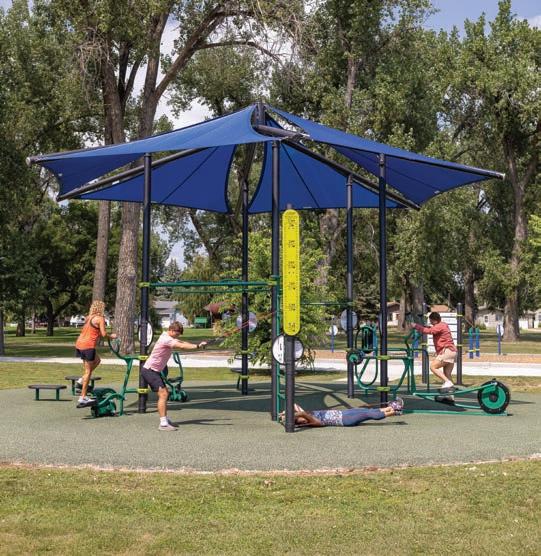


Activated by FitLot®
Bring the best of both worlds together—quality fitness equipment and knowledgeable instructors. Your local FitLot team can train your school’s PE instructors, coaches and teachers on how to use your fitness circuit to its full potential. Go beyond installation to full training, even get help developing physical education curriculum.

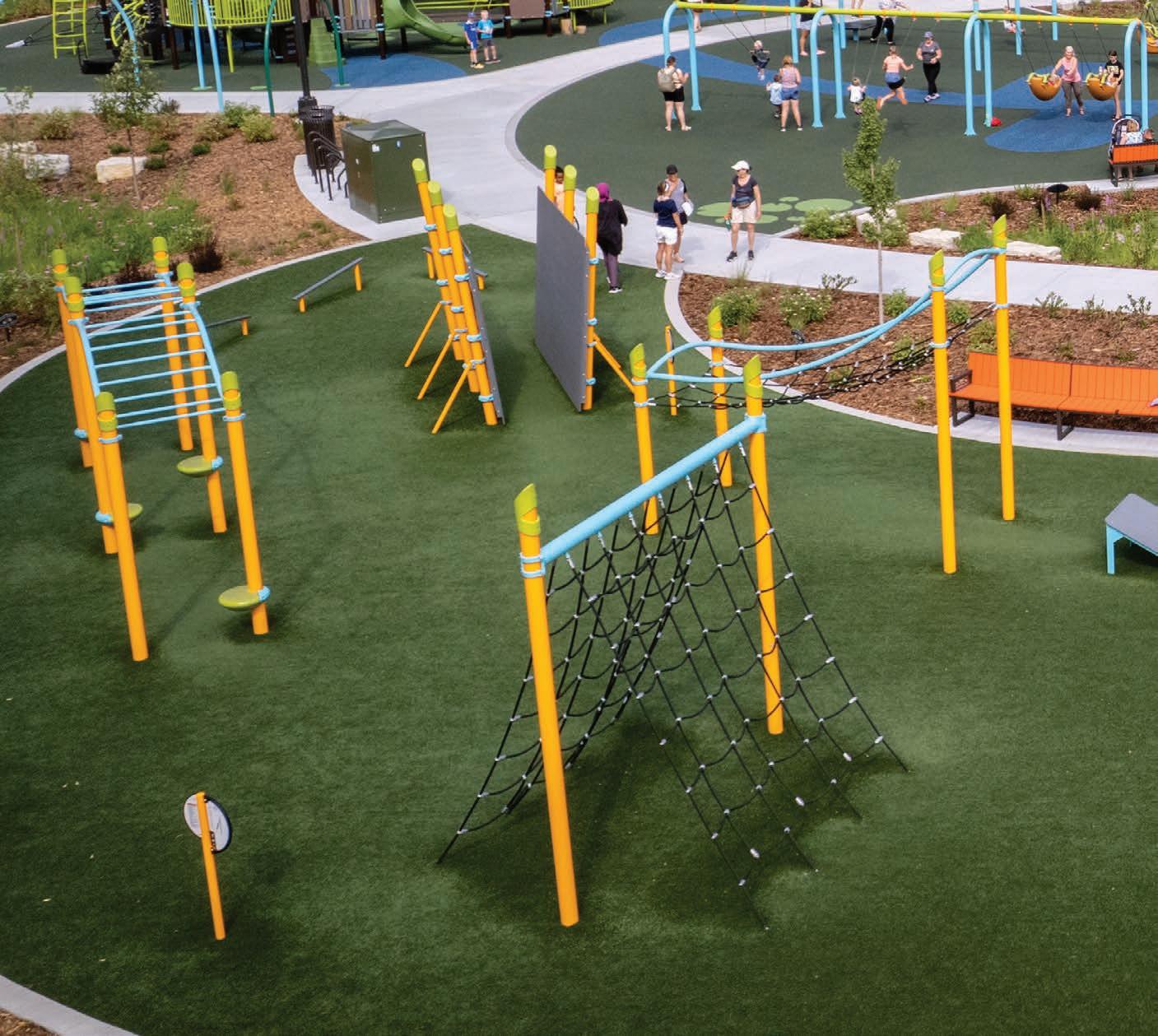
A well-designed fitness circuit can be used to supplement physical education classes as well as school and community athletic programs. Studies have found that exercising outdoors (compared to indoor exercise) may contribute to increased energy as well as reduced anger, tension and depression. Students can use a stopwatch or app on their smartphones to compete against friends or track their progress over time.
It’s important to select outdoor sports and fitness playground equipment that’s built to withstand years of repeated use and exposure to the elements.

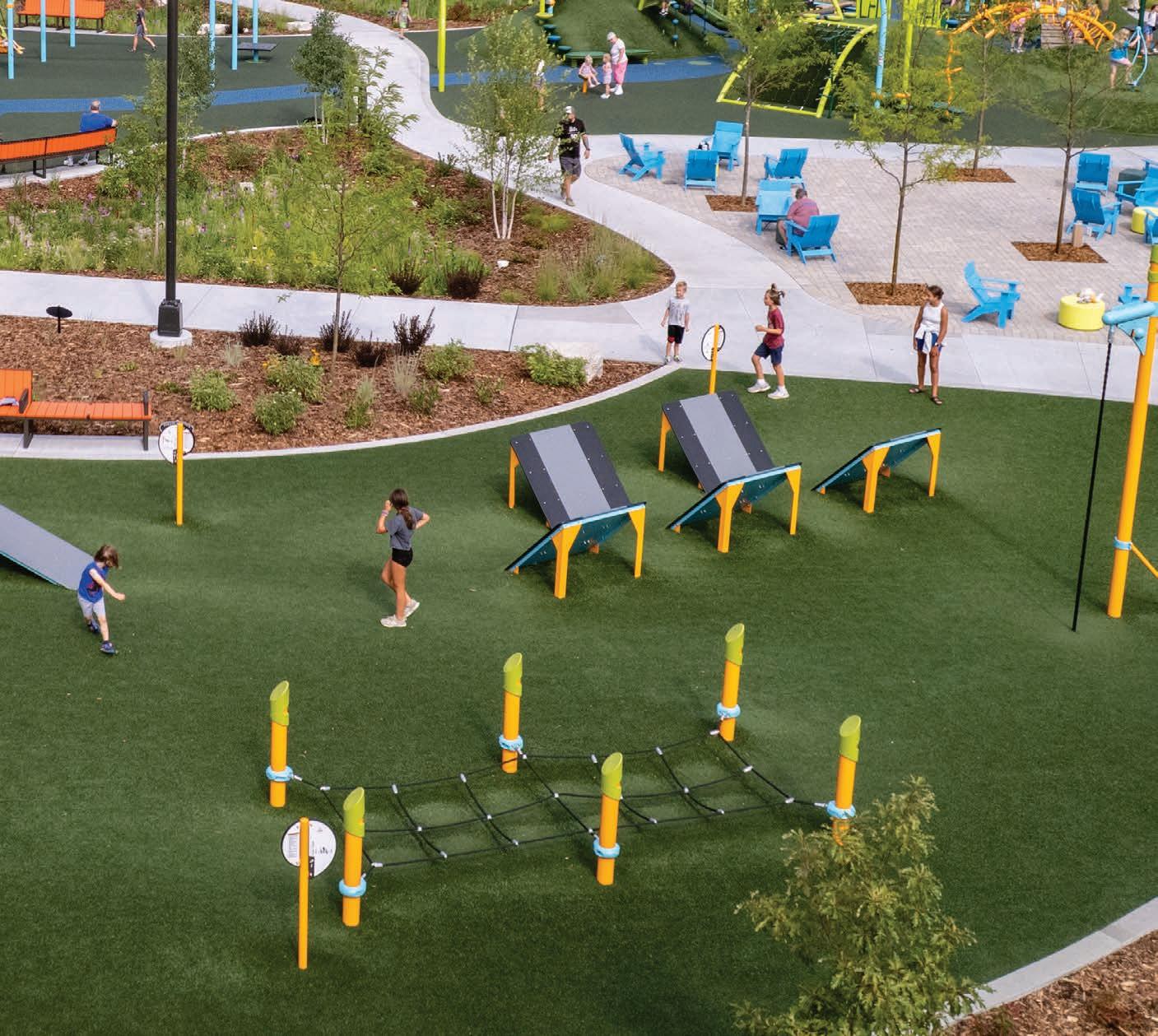
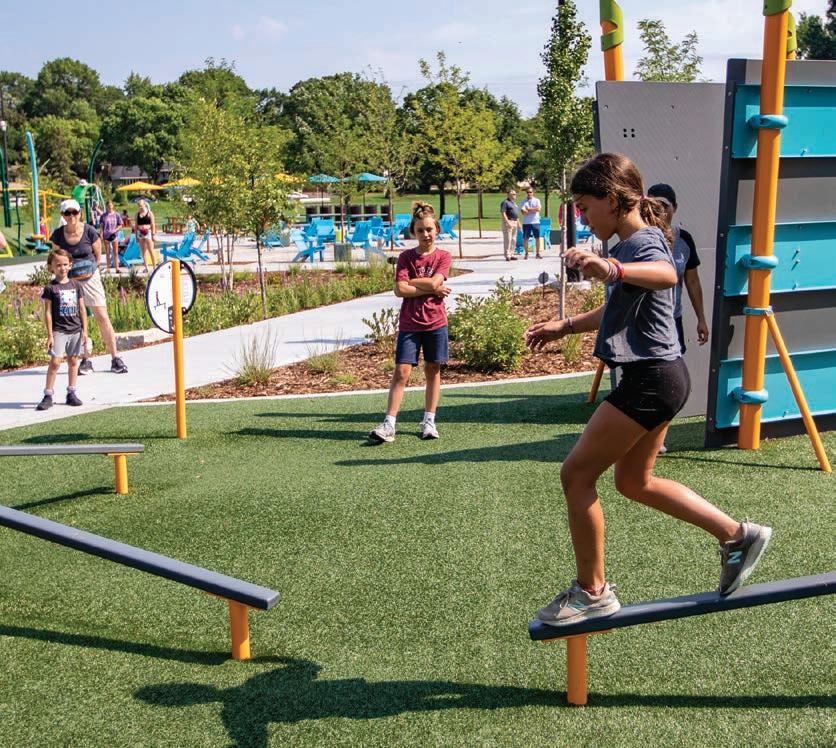
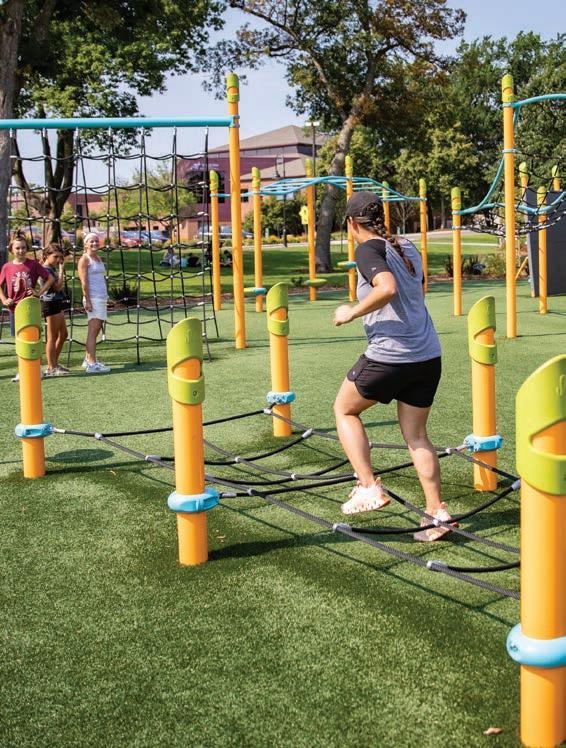
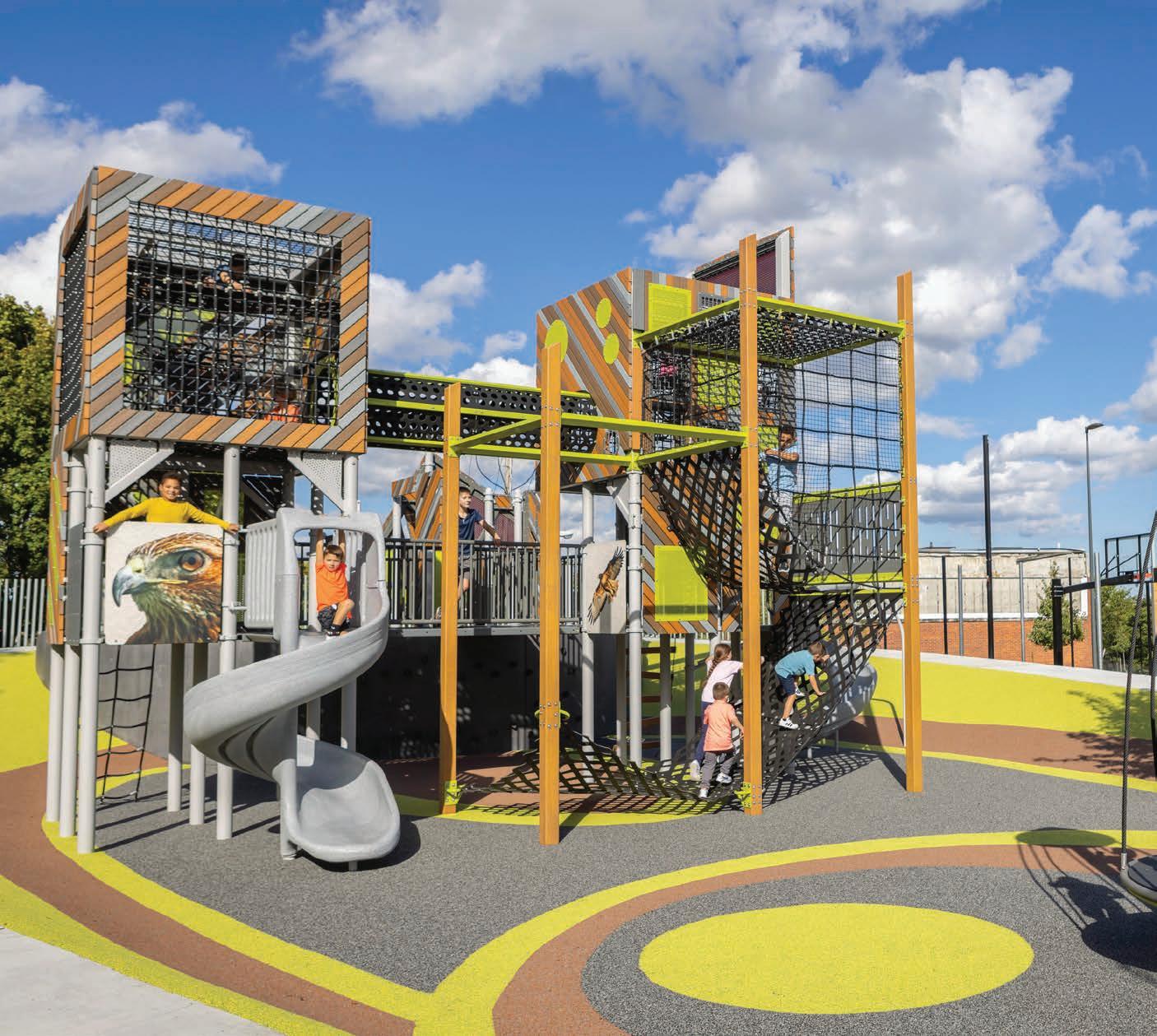
Playgrounds can be personalized for your school in countless ways to fit a range of budgets. Showcasing school spirit, for example, can be as simple as emphasizing your school colors within the playground color palette.
Include your school name and motto on signs made with DigiFuse® graphics or Permalene®.
Create a playable statue of your school mascot from Glass Fiber Reinforced Concrete (GFRC).
Extend the classroom to the playground with learning-focused activity panels.
Use DigiFuse graphics to encourage interaction with fun and creative conversation prompts.



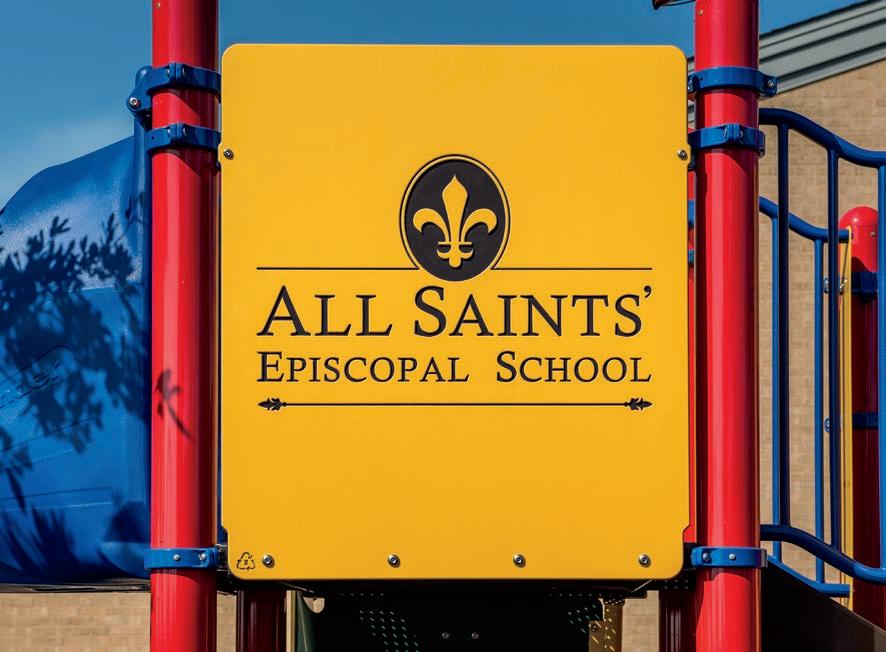
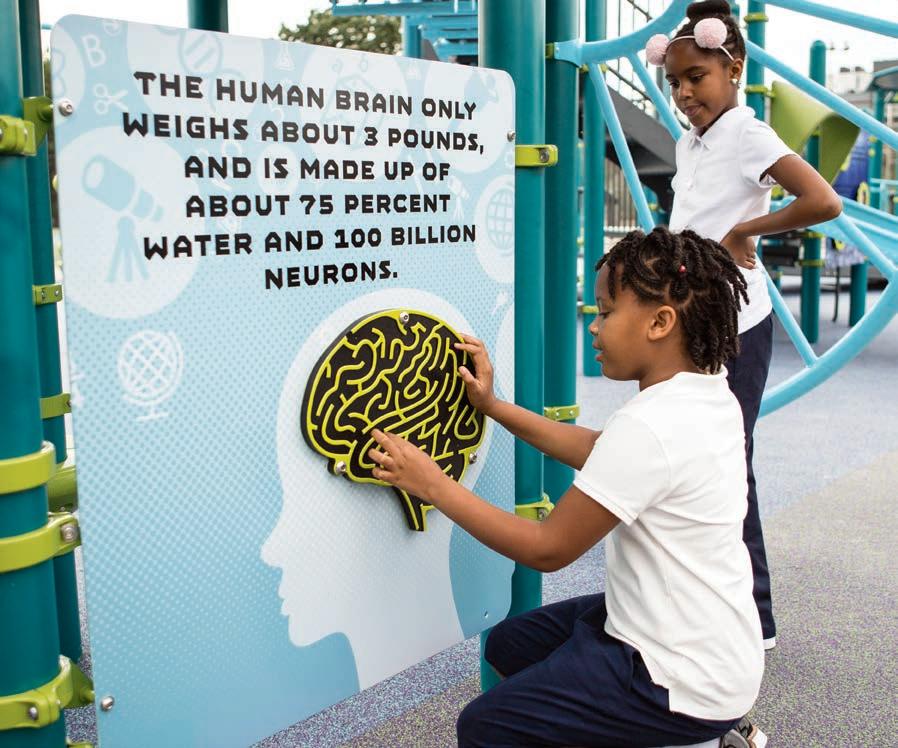
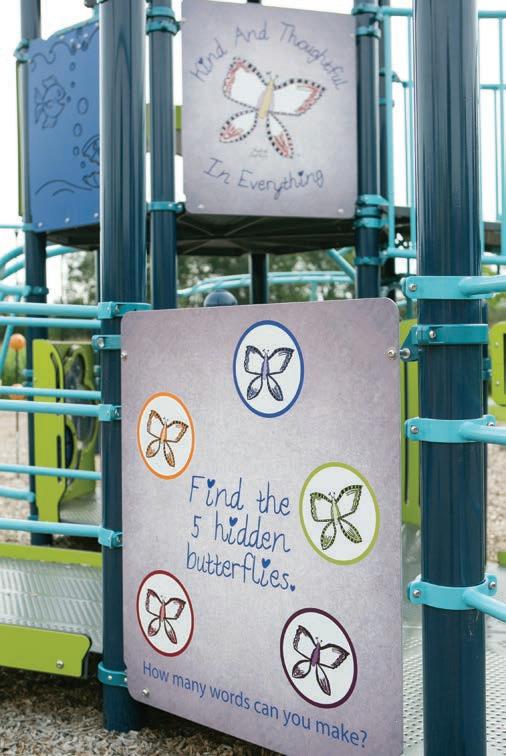

You can also create a fully themed playground that not only delivers on creativity from the insideout and top-down, but built-in play value at every turn. It’s a win-win that encourages imagination and learning alongside continuous physical activity.
Discover how innovative use of play components can lend itself to your chosen theme.
Creative surfacing and shade can raise your design to a new level.
Let graphic play panels round out your theme.
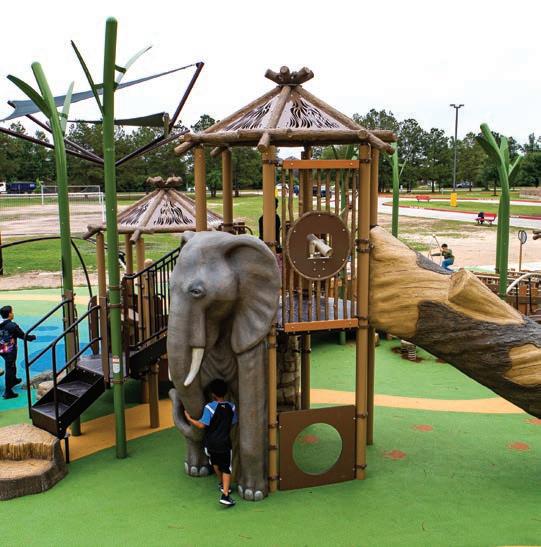
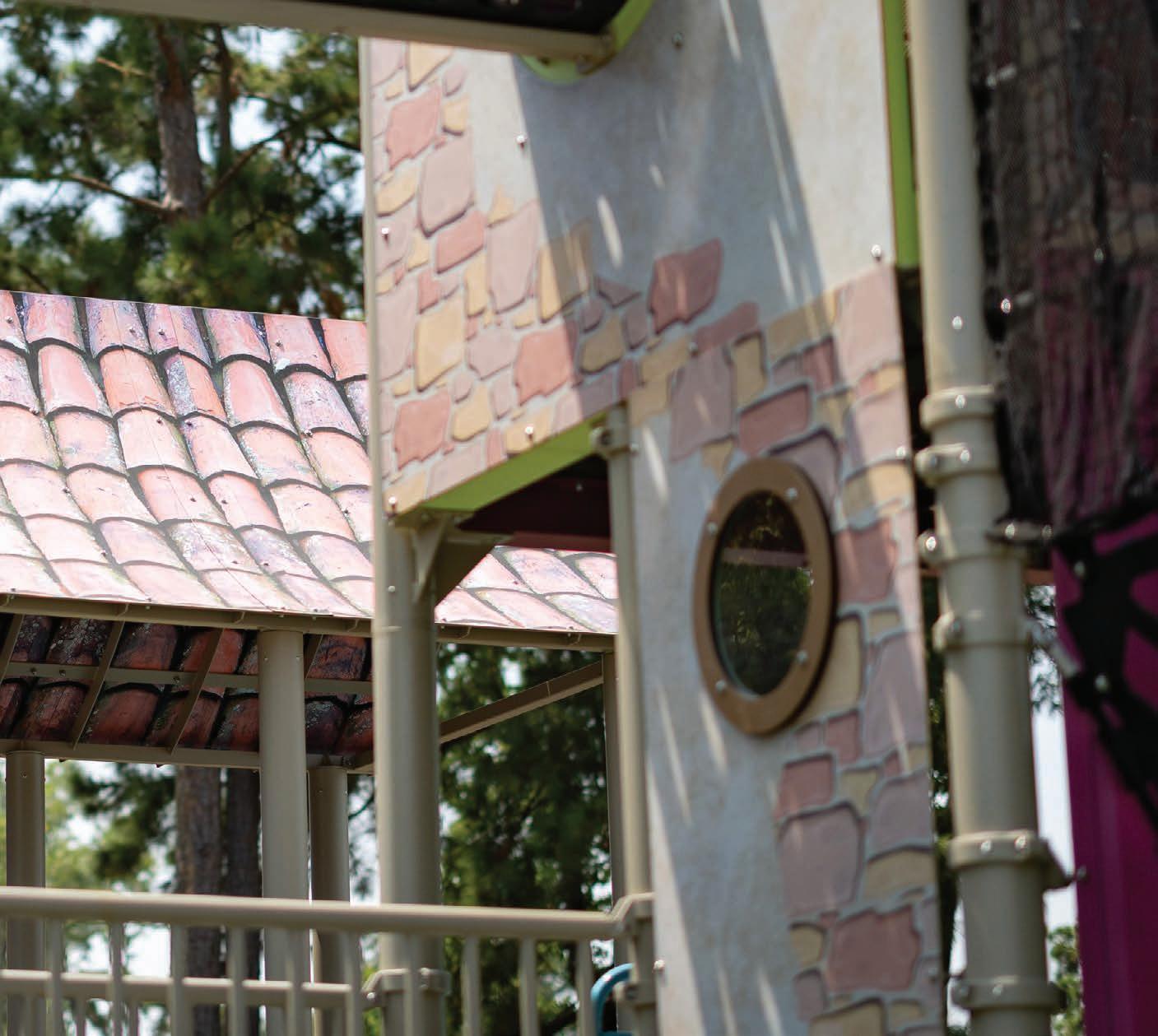


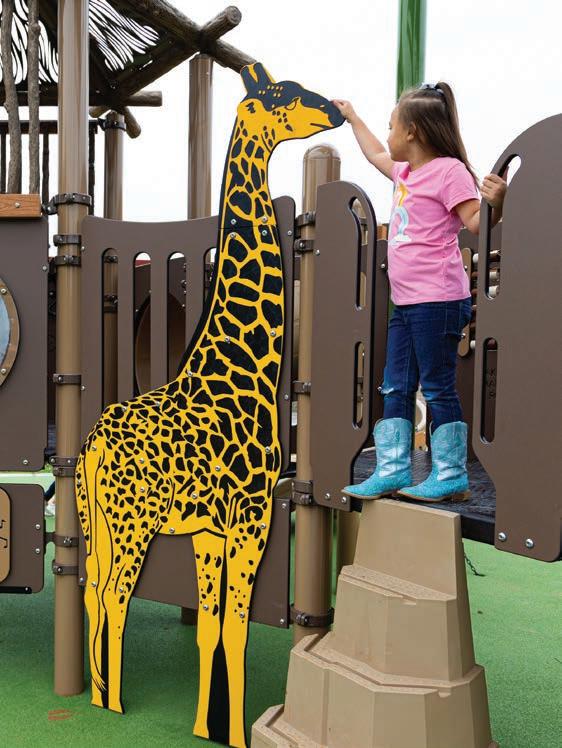
First, identify key stakeholders, such as school administrators, teachers, students, parents, physical/occupational therapists and other community members. Then form specialized committees:
• Budget
• Fundraising
• Research
• Design
• Construction/Installation
This can vary greatly depending on your school, the playstructure you want and your community. But here is a short list of proven sources:
• Grant Resources: Playground grants are a great way to secure supplemental funding for new playground equipment. There are many sources of grant money available, including federal programs, location-specific grant opportunities for each state as well as international opportunities. Our online grant resources can help you navigate the process by providing a list of federal grants and state grant programs, as well as grants offered by organizations and corporations. For the most up-to-date information, visit playlsi.com/playground-grant.

• Purchasing Contracts: Any school or nonprofit agency can take advantage of easy-to-use purchasing contracts, like Sourcewell.
• Fundraising Activities: Consider events such as fun runs, silent auctions, car washes, raffles, gift bricks, family fun nights, etc.
An average project may take 6 to 12 months. This can depend on many factors, including how you’re funding this project, the project’s size and even seasonality. Work with your Landscape Structures playground consultant to help create a project plan that includes your vision, timeline, budget and other key goals.
WHY CHOOSE LANDSCAPE STRUCTURES?
Like you, we believe play is essential to healthy childhood development. And at Landscape Structures, we believe play is life-changing. That’s why every one of our designs is built with years of play value in mind, encouraging kids to play longer, build new skills over time and take on fresh challenges as they grow. Let us help transform your school’s vision for a new playground into reality.
QUALITY Great design requires precision manufacturing, proprietary innovations and use of only the best materials. That’s why our products are built to last through this generation of children and onto the next.
SAFETY Safety has been a priority of ours since the beginning. Our equipment is created to be as safe on the 10,000th use as it is on the first.
TOTAL COST OF OWNERSHIP We balance design, longevity and durability to redefine the total cost of playground ownership. The true value of a well-crafted playground is realized over time— lower operational costs, fewer headaches and countless hours of safer fun.

Include them in the upfront planning, tap seasoned community members to help with fundraising, then invite everyone to take part in a Community Build when the playstructure is ready for installation. Consider partnering with your local Parks and Recreation department. Pride and sense of ownership grows with broader involvement.
Have more questions? Download our Playground Planning Guide at playlsi.com/planning-checklist/ or contact your local playground consultant at 888.438.6574.
Landscape Structures not only demonstrates its commitment to kids through creative and innovative playground equipment, but also makes a genuine pledge to the profession of elementary and middle school principals through its dedication to supporting NAESP and the members we serve.
L. Earl Franks, Ed.D., CAE
We know the playground is a place to have fun and continue to learn outside of the classroom. As a proud partner of NAESP, we work closely with school leaders to design and create play spaces that promote healthy living and a successful future for
And that’s just the beginning. Our affiliations with respected and leading organizations like Too Small To Fail, Inclusion Matters® by Shane’s Inspiration, Kiwanis® International and FitLot® give us the opportunity to create better playgrounds that build community. To learn more about all of our affiliations, please visit playlsi.com/affiliations.

A play environment influences how kids engage, learn and develop, and every child is different. We design with these differences in mind, in ways that respect and honor each pathway, while offering fun and exciting new challenges at every turn.
Benefit from our consultants’ high level of service and close partnership throughout the process. From conception to completion, your local consultant will listen, provide viable solutions and ultimately help you bring your project to life.
We’ve worked with communities around the world on thousands of Community Build playgrounds. It’s always exciting to bring school officials, teachers, parents, neighbors and children together to turn a dream into a beautiful new playground.
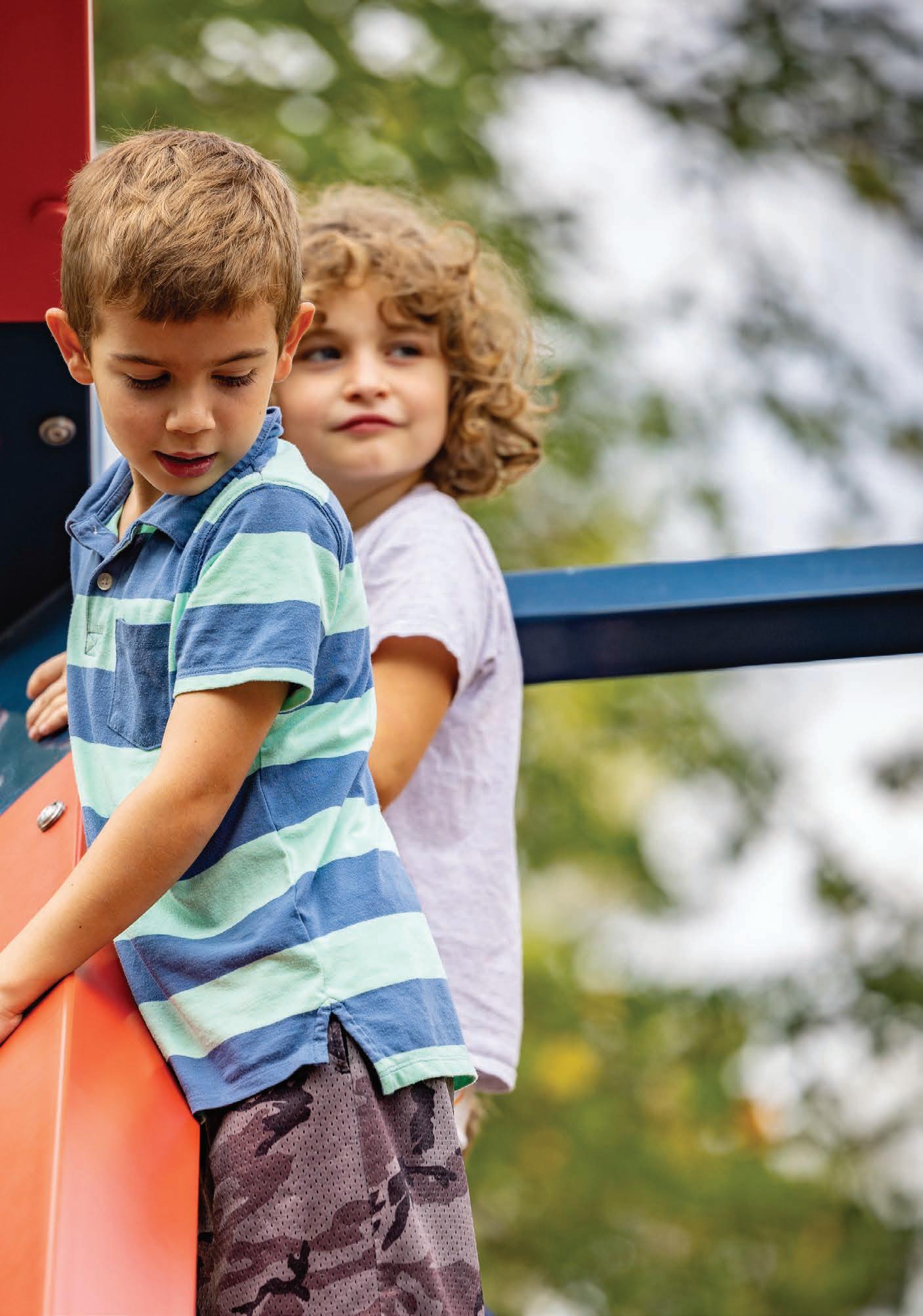
888.438.6574
601 7th St. South Delano, MN 55328
1 Golinkoff R, Hirsh-Pasek K. Becoming Brilliant: What Science Tells us About Raising Successful Children. Washington, DC: APA Press; 2016.
2 Feldman R, Magori-Cohen R, Galili G, Singer M, Louzoun Y. Mother and infant coordinate heart rhythms through episodes of interaction synchrony. Infant Behav Dev. 2011;34(4):569–577.
3 Lieber R. Why planning for play deserves serious thought. New York Times. 2016; (January 2):B1.
4 Christakis DA. Rethinking attention-deficit/hyperactivity disorder. JAMA Pediatr. 2016;170(2):109–110.
5 Goldstein J. Play in children’s development, health and well-being: technology and play. In: Pellegrini DA, ed. Oxford Handbook of the Development of Play. New York, NY: Oxford University Press; 2011.
6 Dewar G. The cognitive benefits of play: effects on the learning brain. Available at: www.parentingscience.com/benefits-of-play.html. Accessed October 24, 2017
7 Terada Y. “Research-Tested Benefits of Breaks,” Edutopia.org https://www.edutopia.org/article/research-tested-benefits-breaks/ 8 Mader J. “Want resilient and well-adjusted kids? Let them play,” Hechingerreport.org https://hechingerreport.org/want-resilient-and-well-adjusted-kids-let-them-play/ 9 “Supporting Children’s Learning Through Play,” ChildCare.gov https://childcare.gov/consumer-education/childrens-learning-through-play 10 U.S. Department of Education 2021.
11 Heckman J. Keynote address. In: Winthrop R, ed. Soft Skills for Workforce Success: From Research to Action. Washington, DC: Brookings Institution; 2015.
12 London R. Rethinking Recess: Creating Safe and Inclusive Playtime for All Children in School, Harvard Education Press, 2019.
13 Centers for Disease Control and Prevention (CDC), July 3, 2024.
14 Mather JA, Anderson RC. Exploration, play and habituation in octopuses (Octopus dofleini). J Comp Psychol. 1999;113(3):333–338.
15 Ridgers ND, Stratton G, Fairclough SJ, Twisk JWR. Long-Term Effects of a Playground Markings and Physical Structures on Children’s Recess Physical Activity Levels. Preventative Medicine 44 (2007): 393-397.